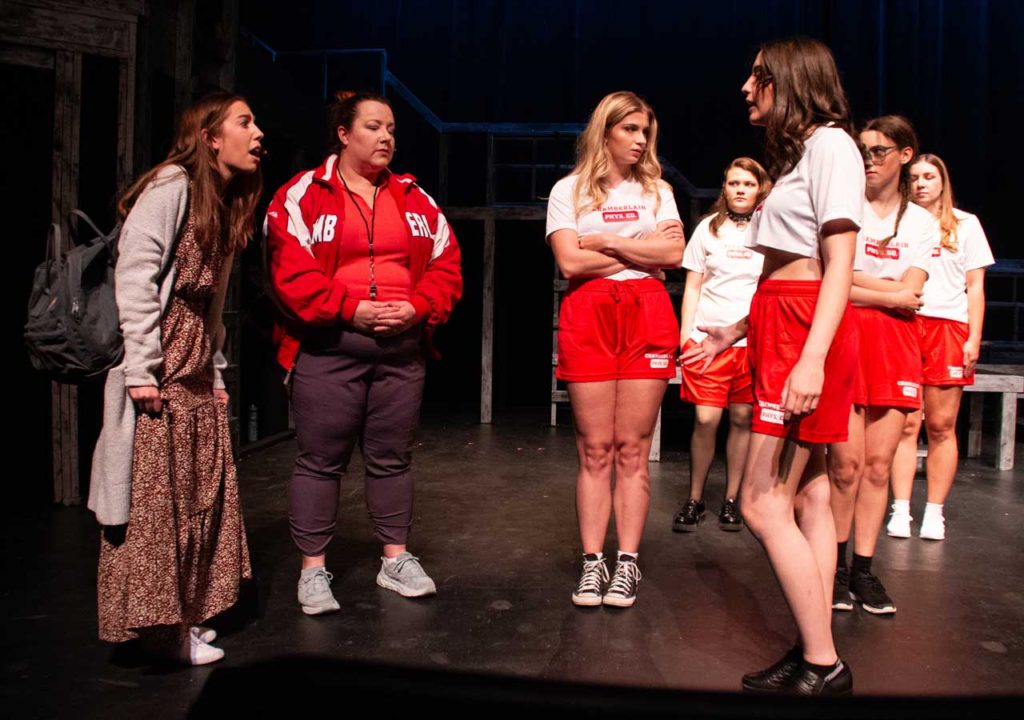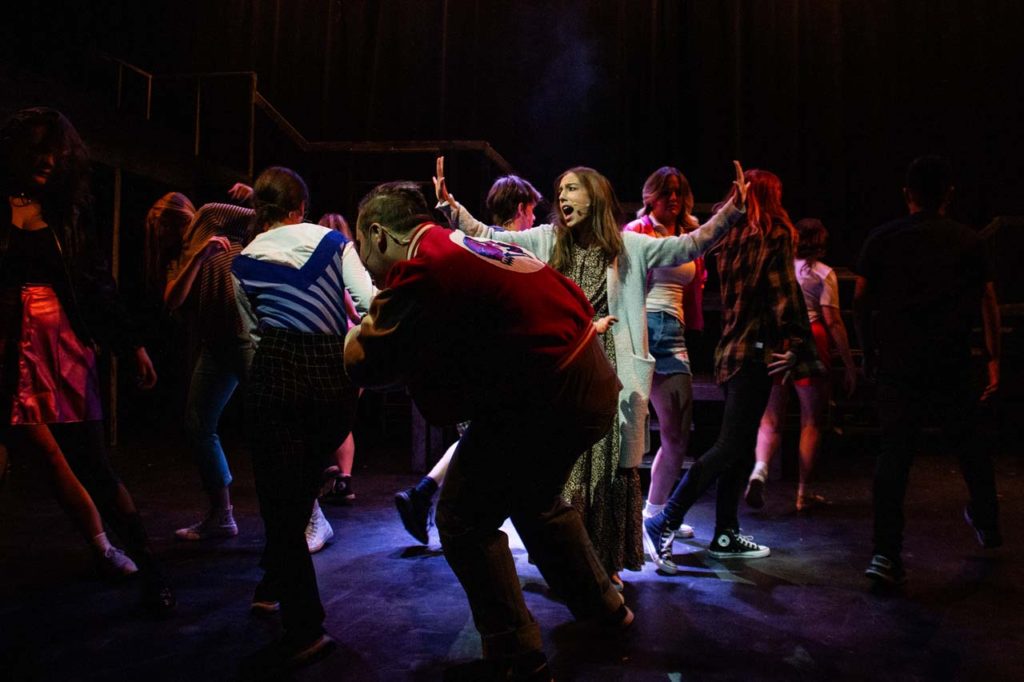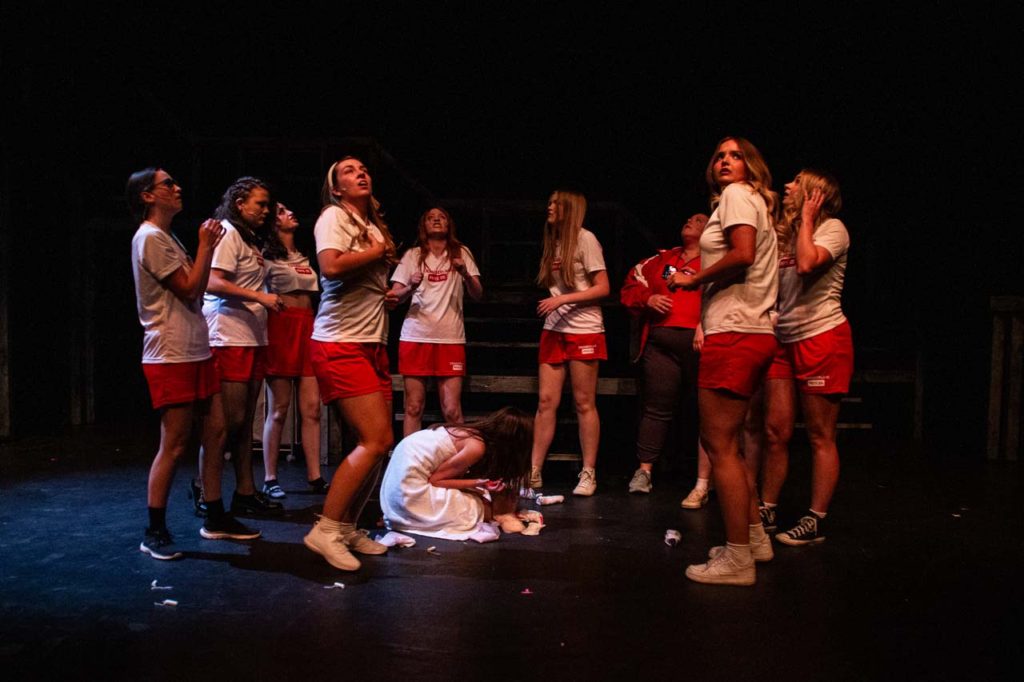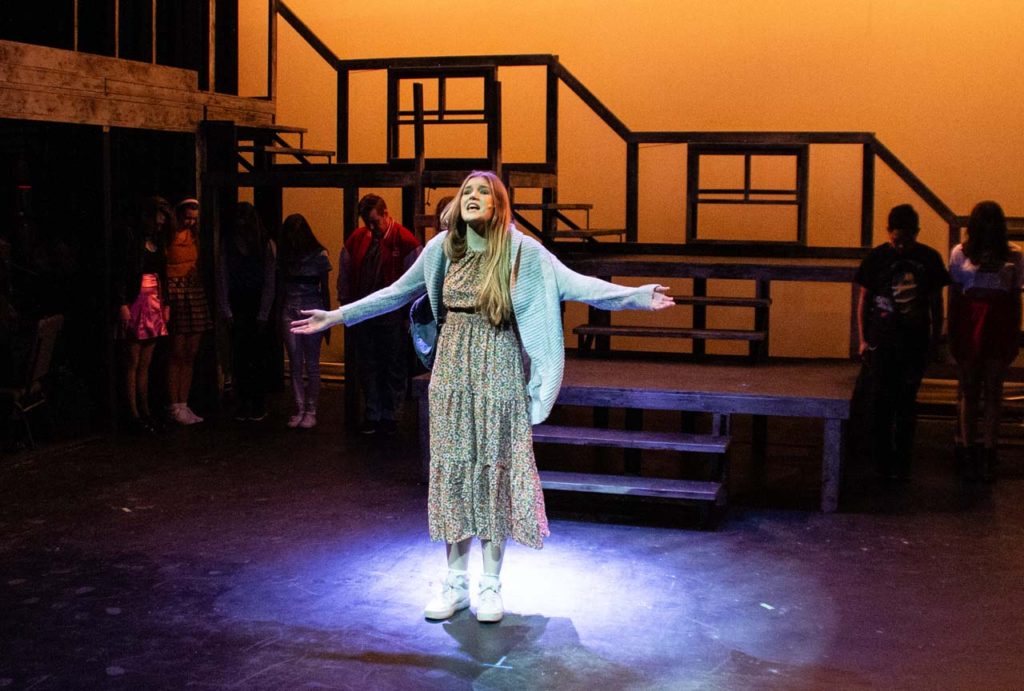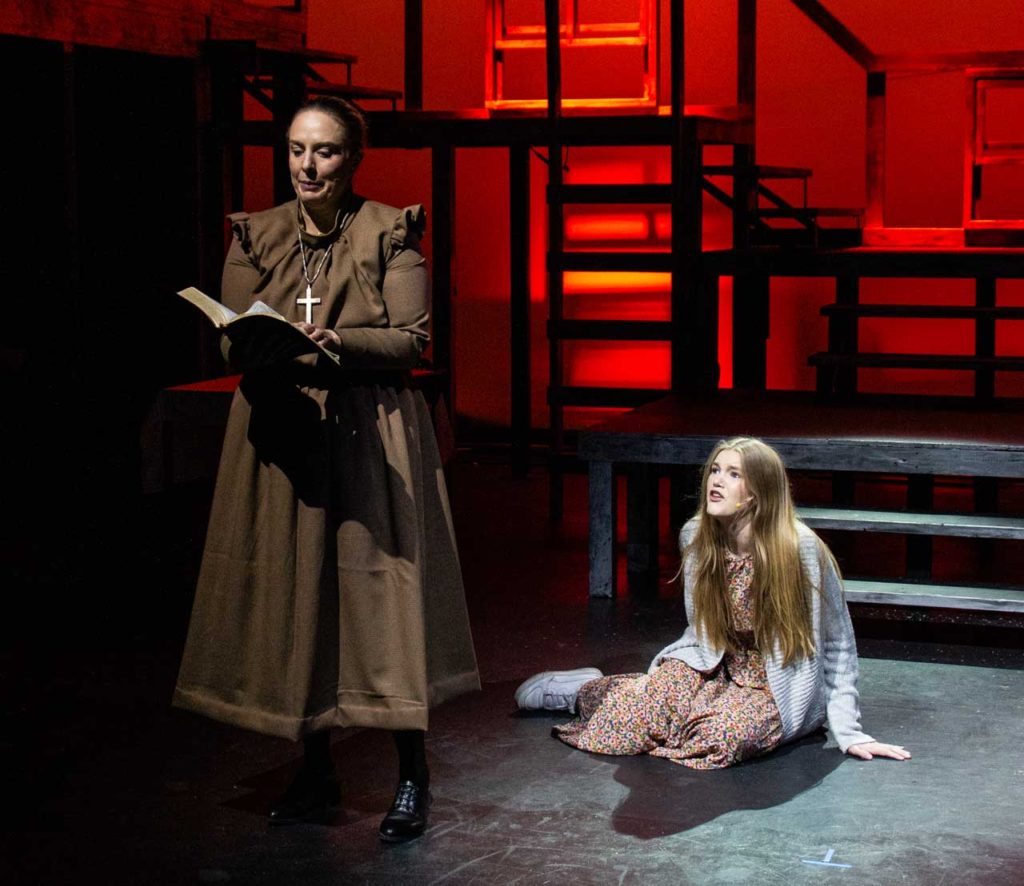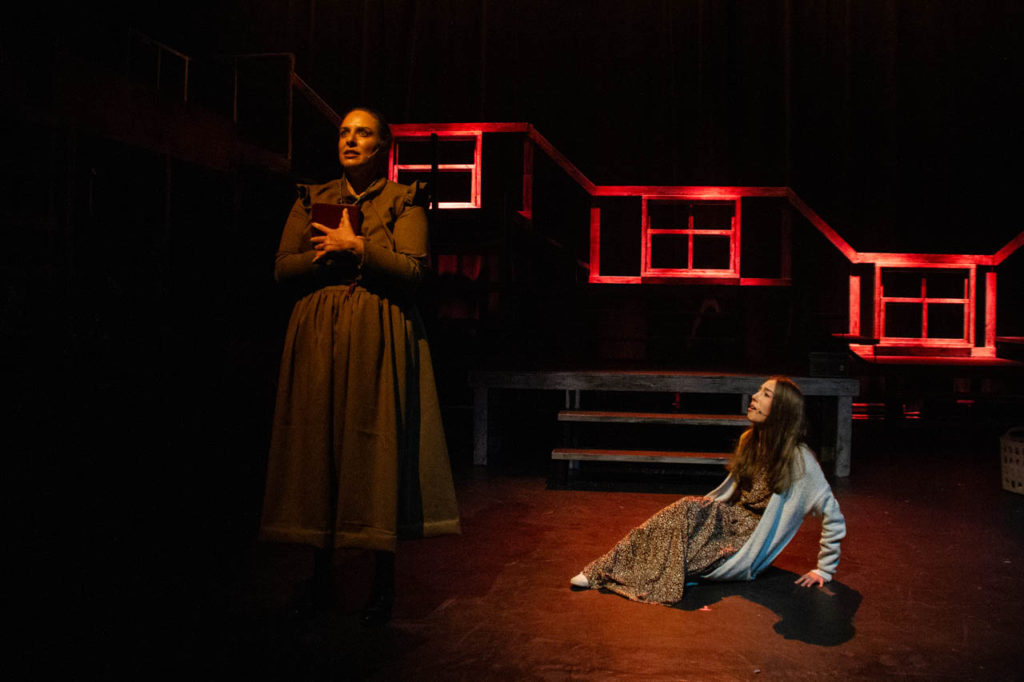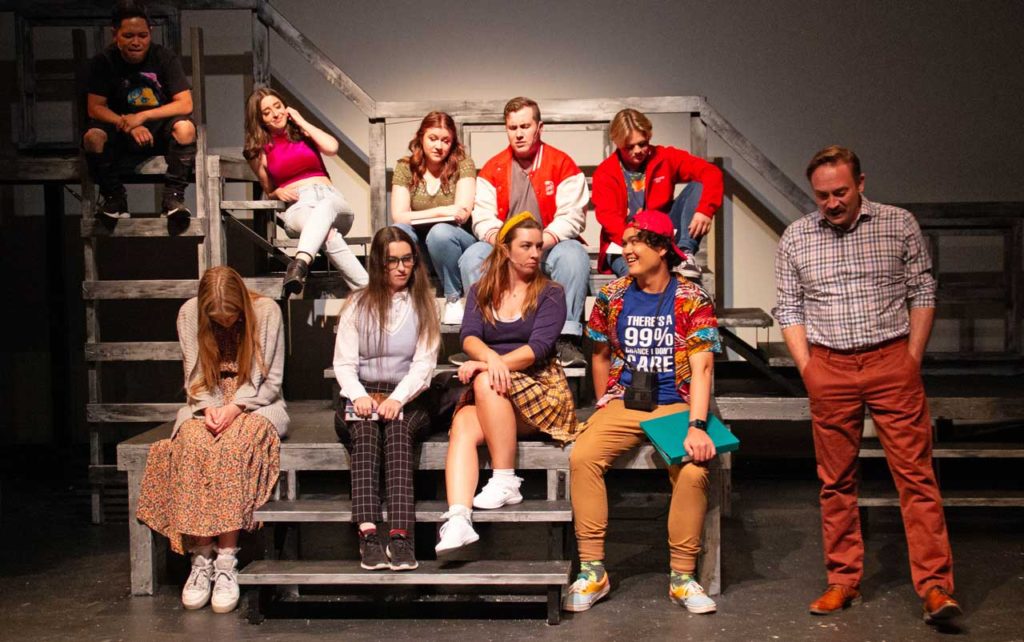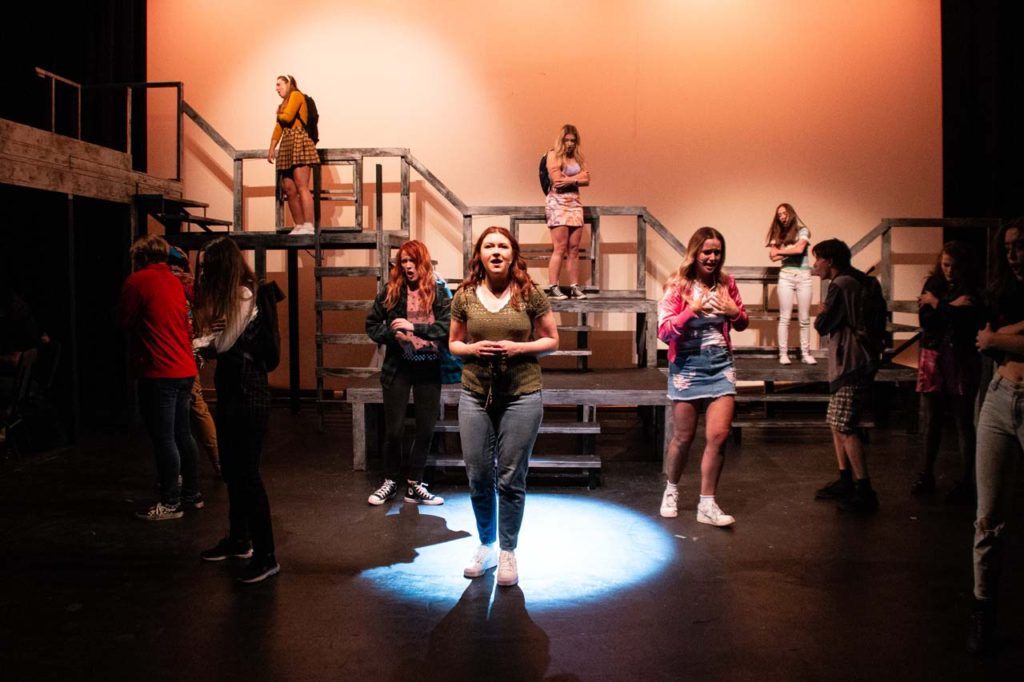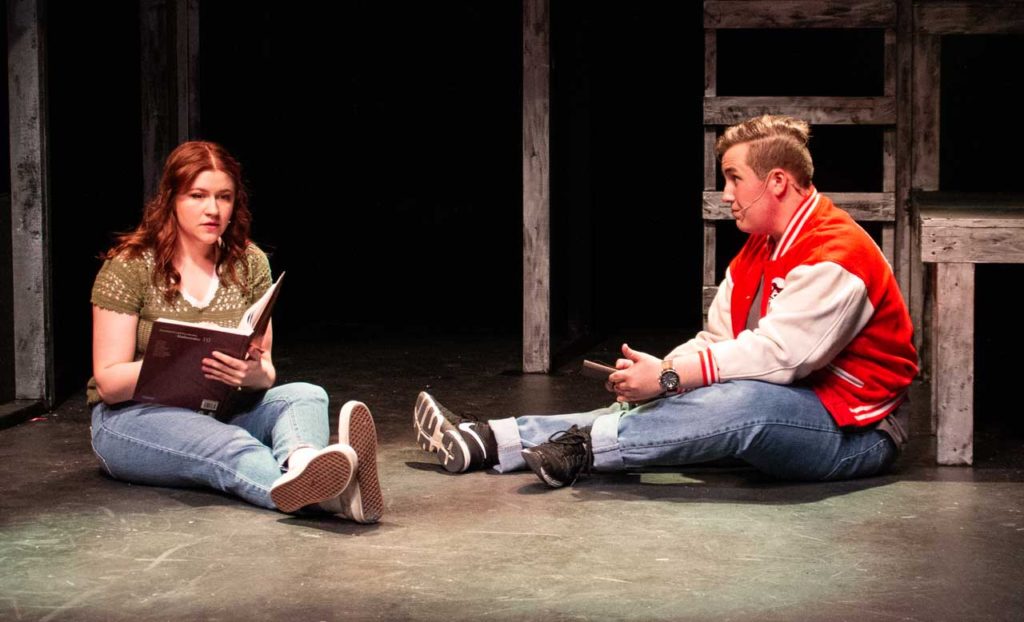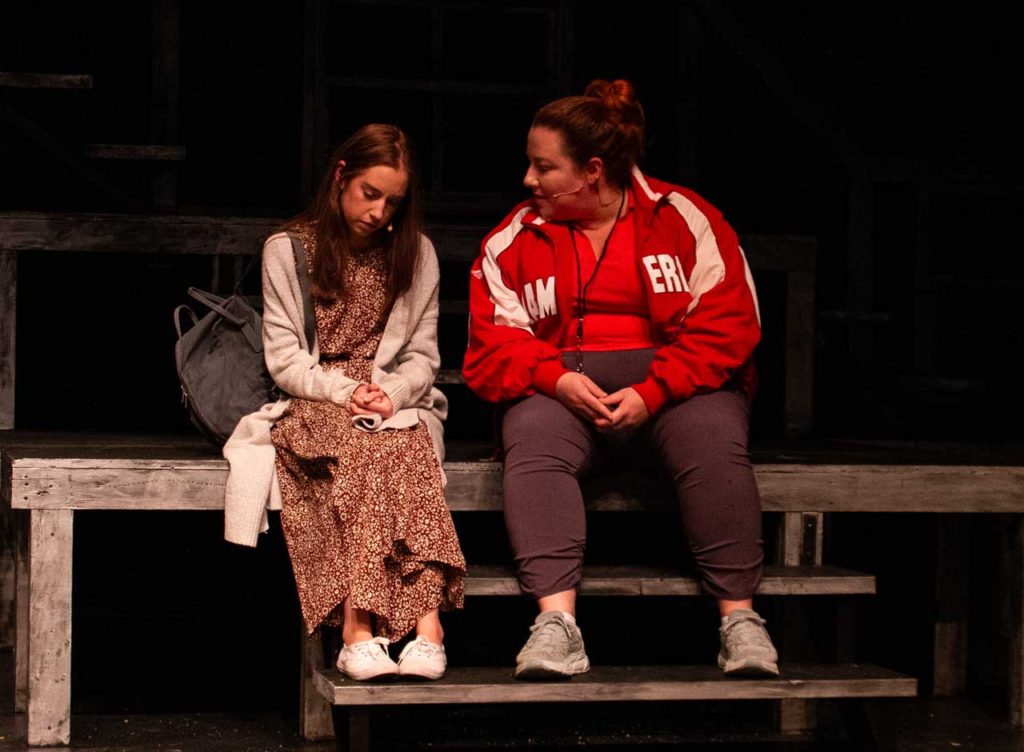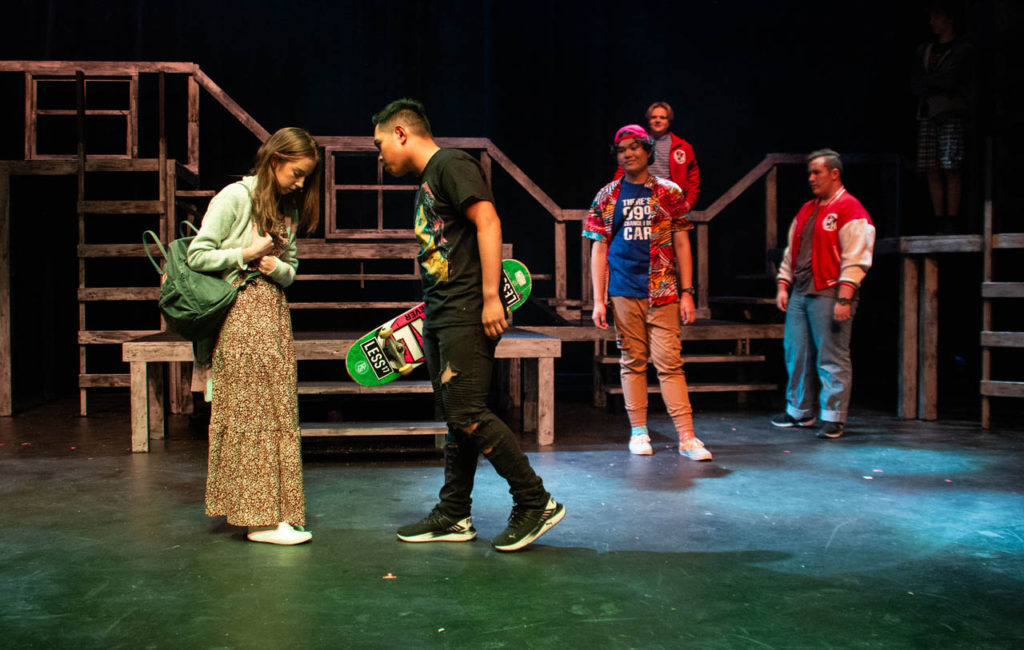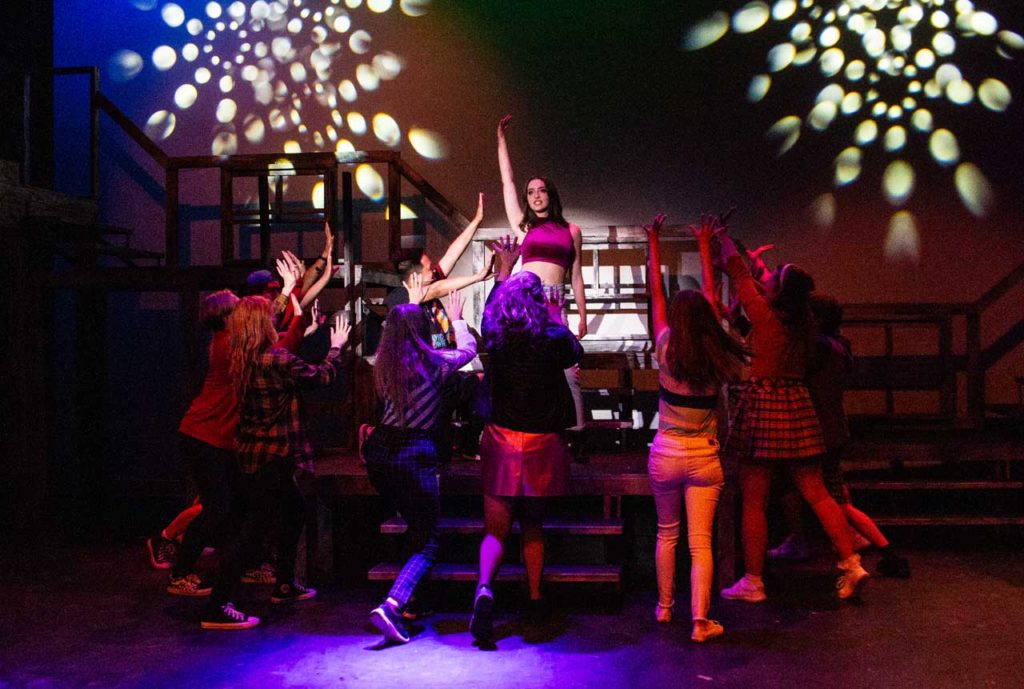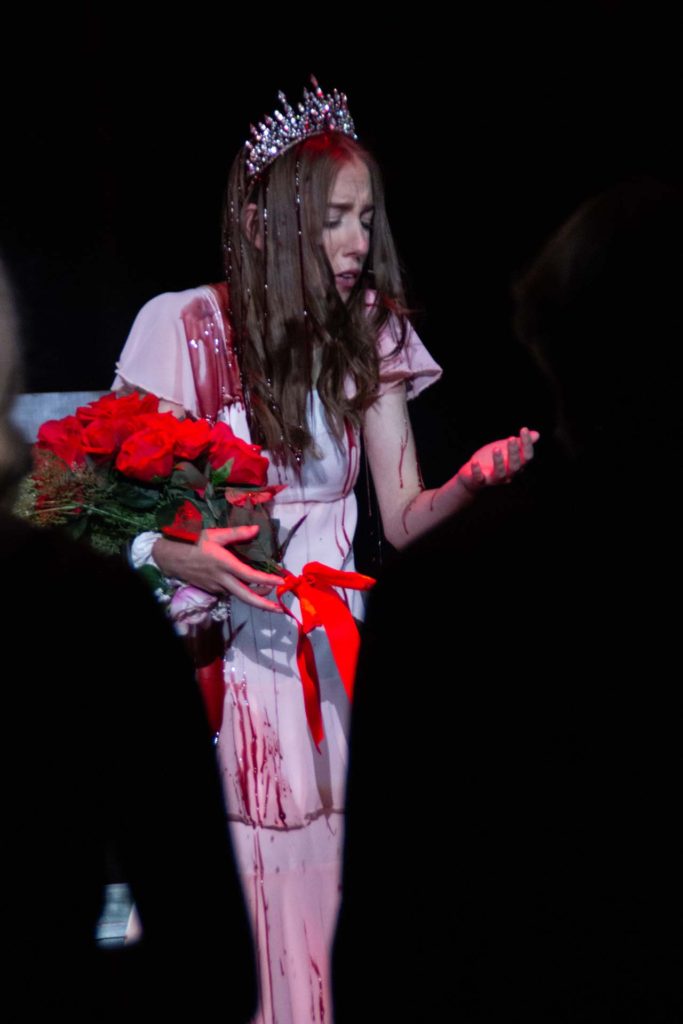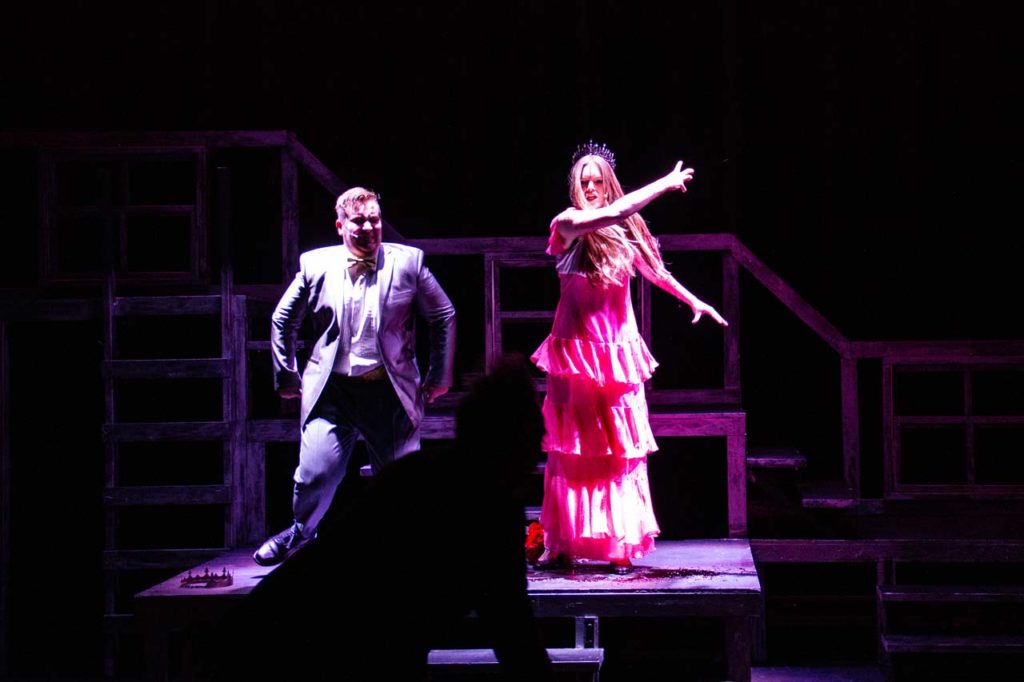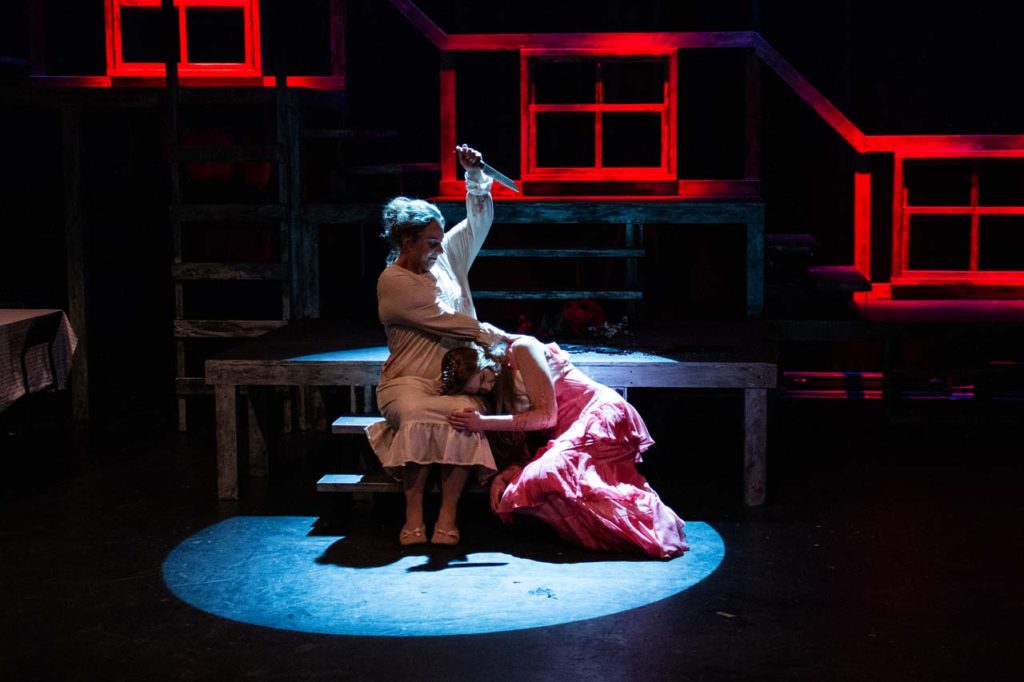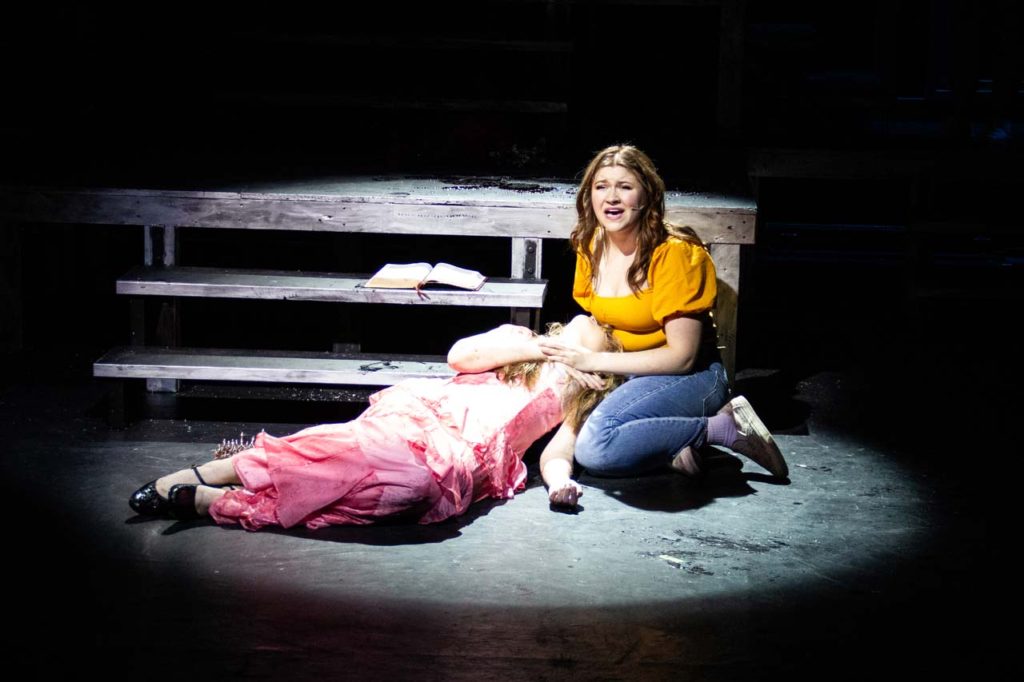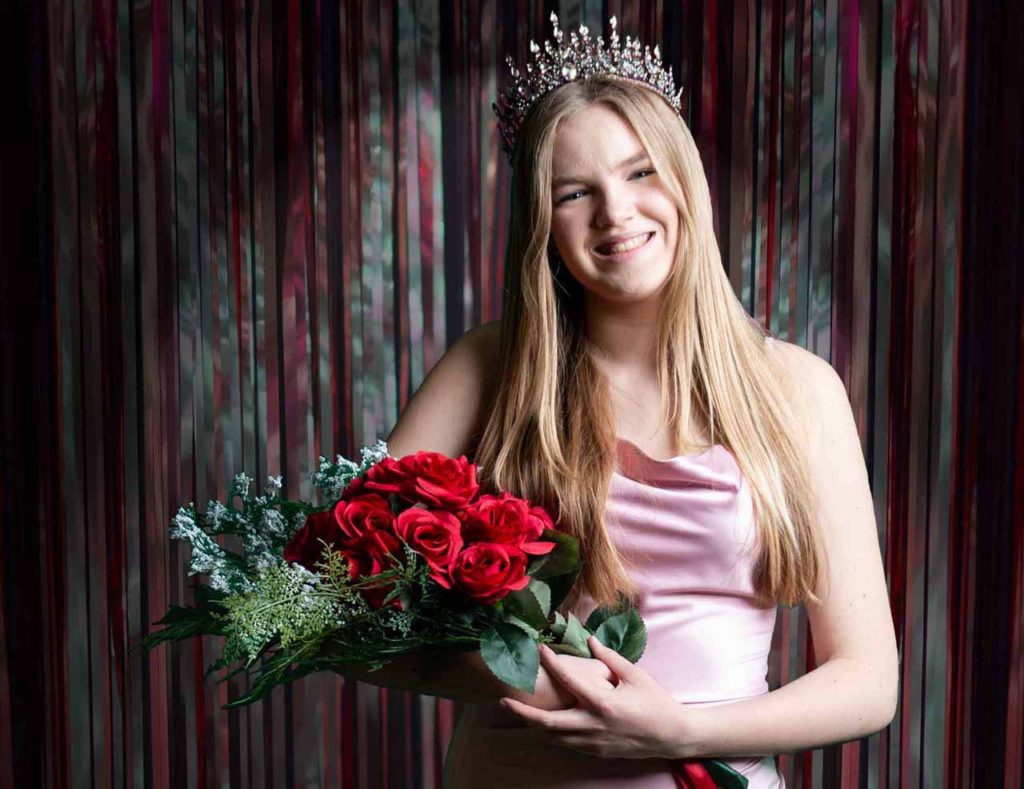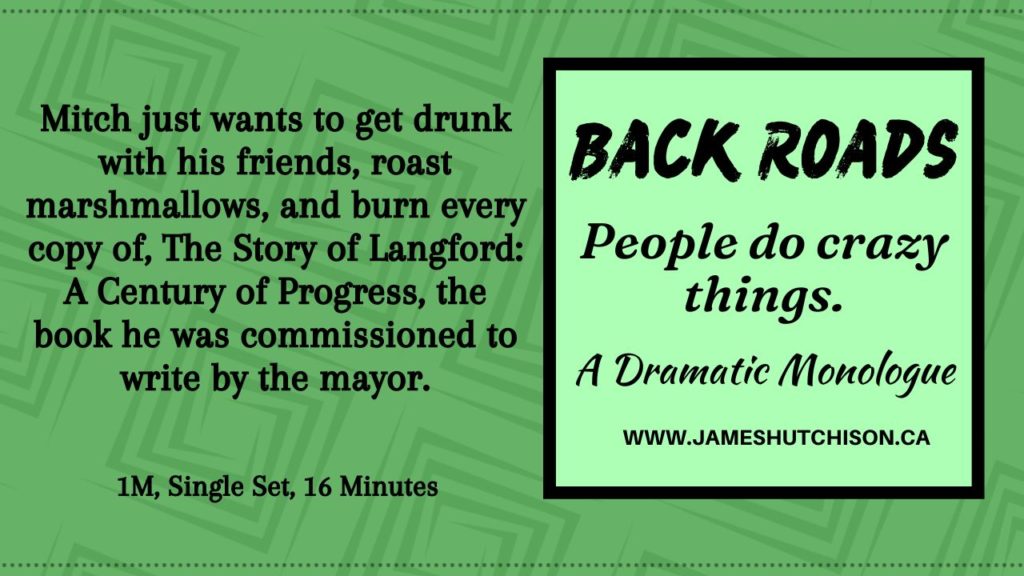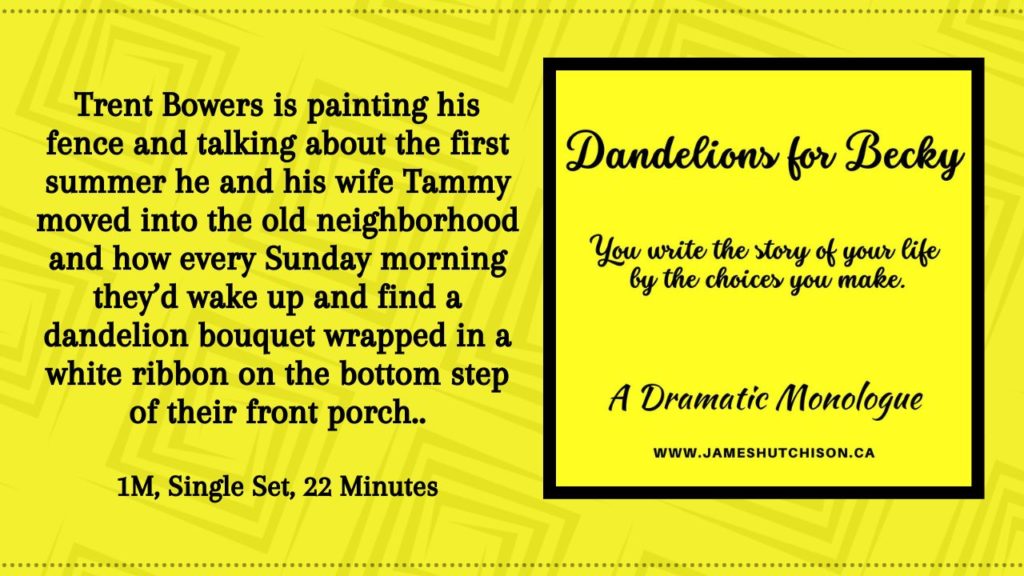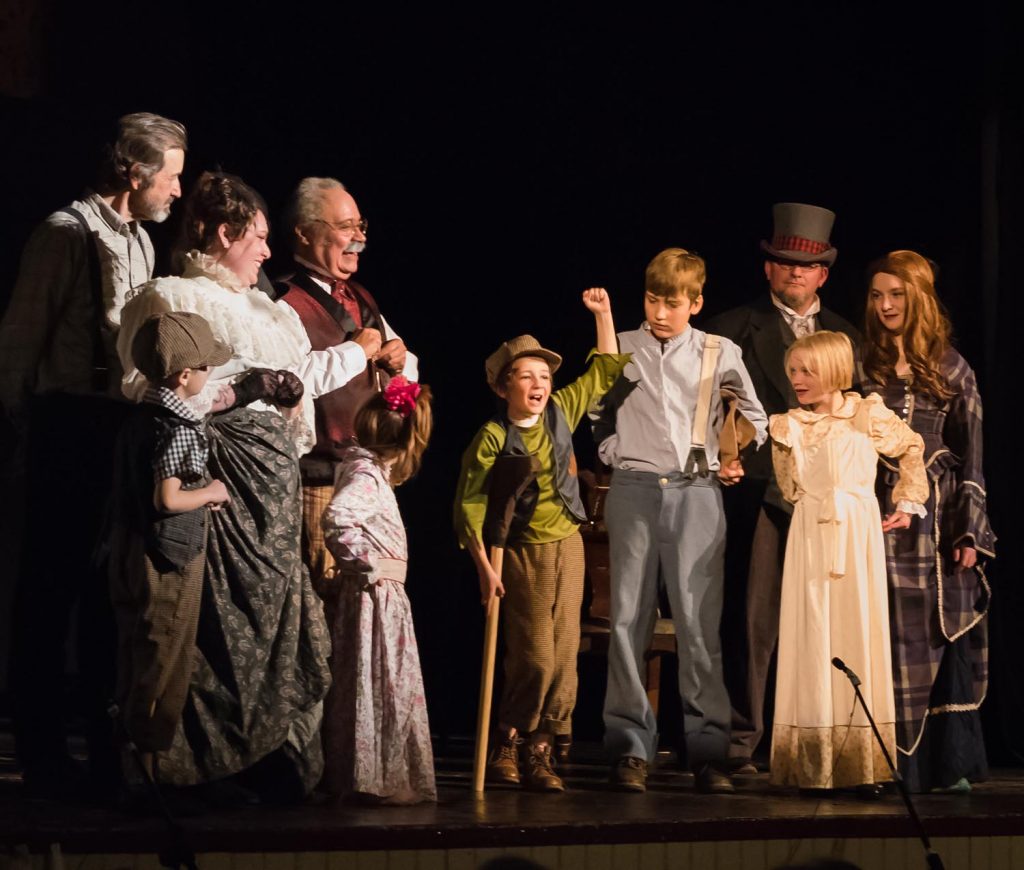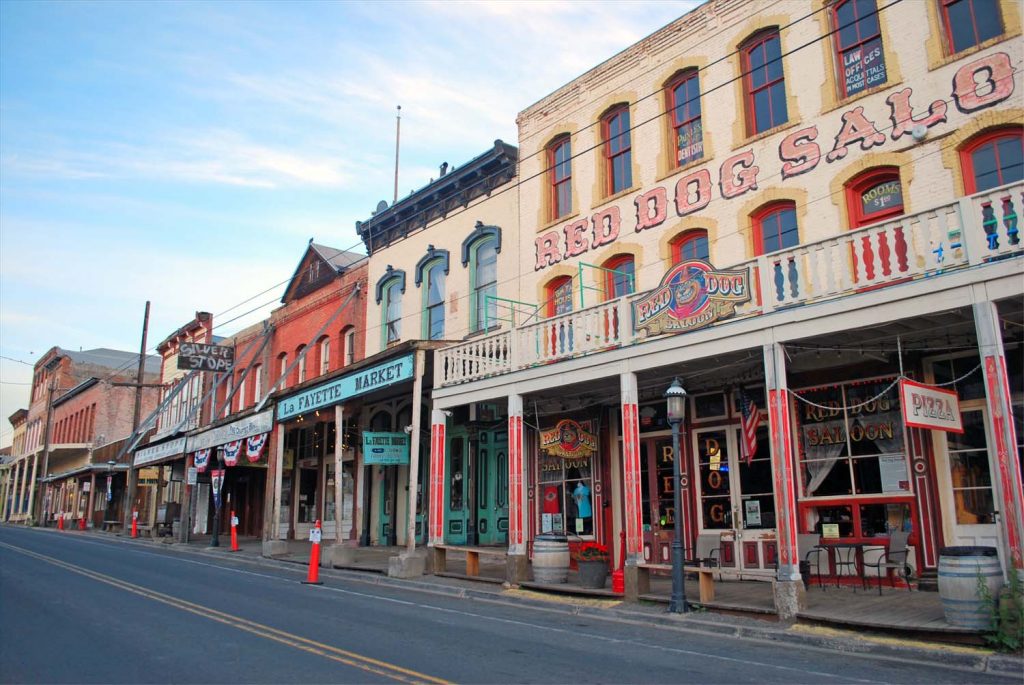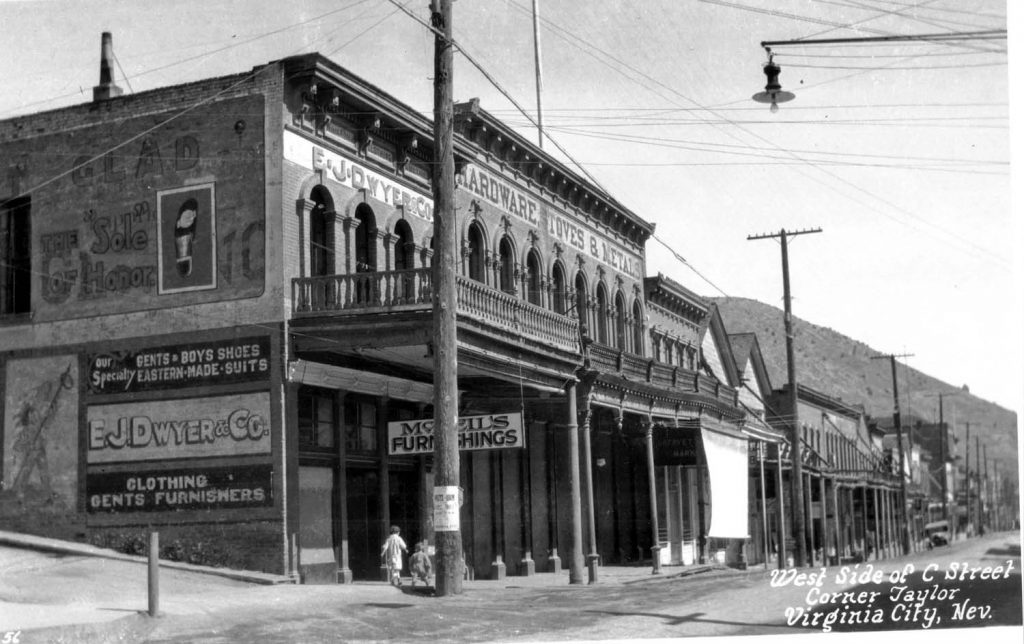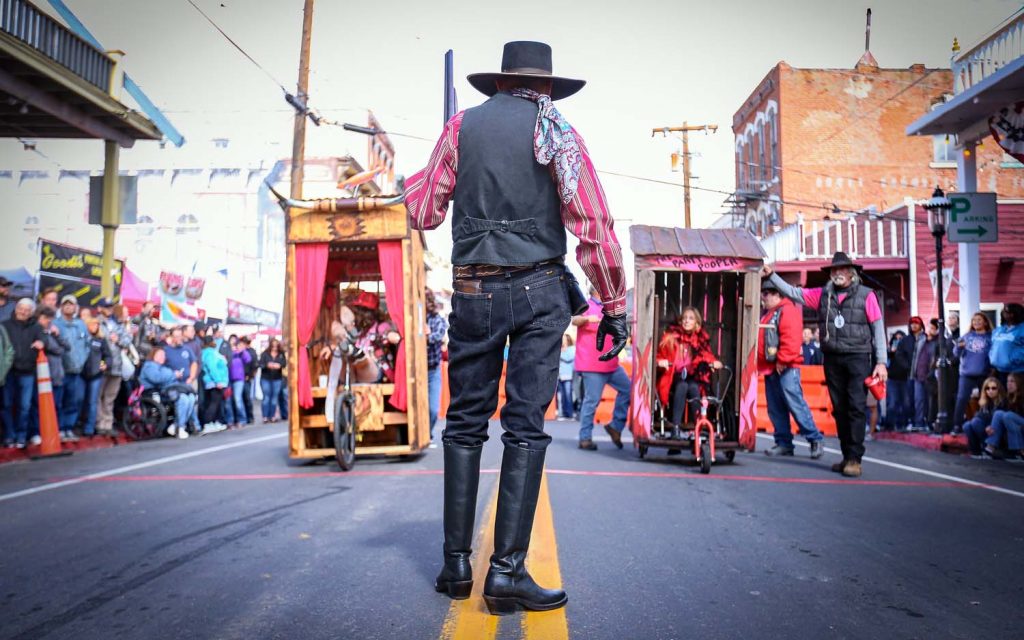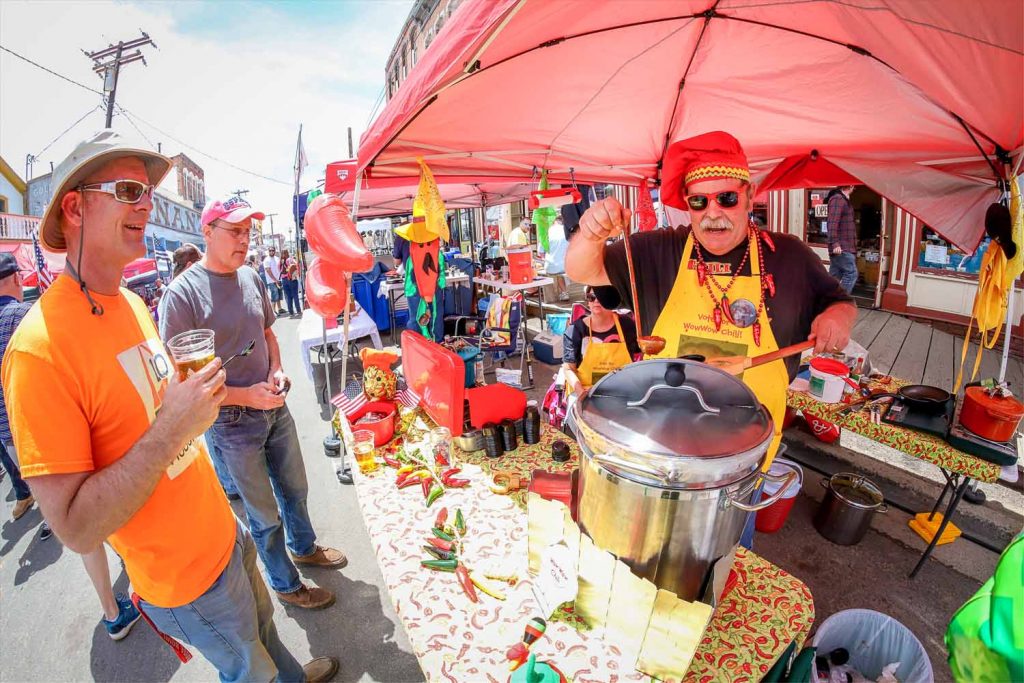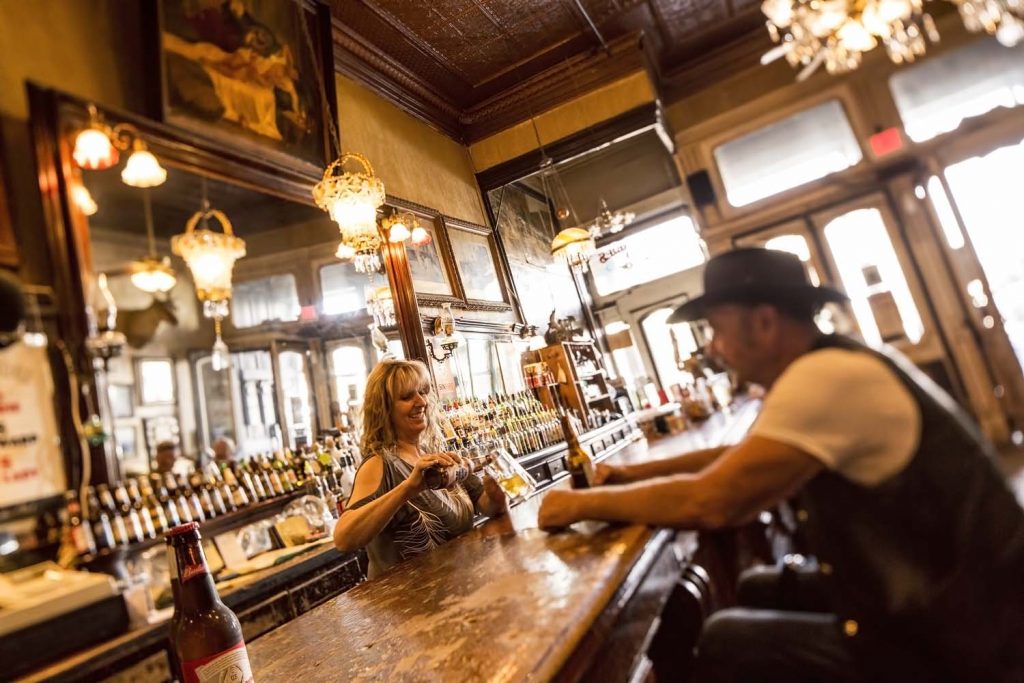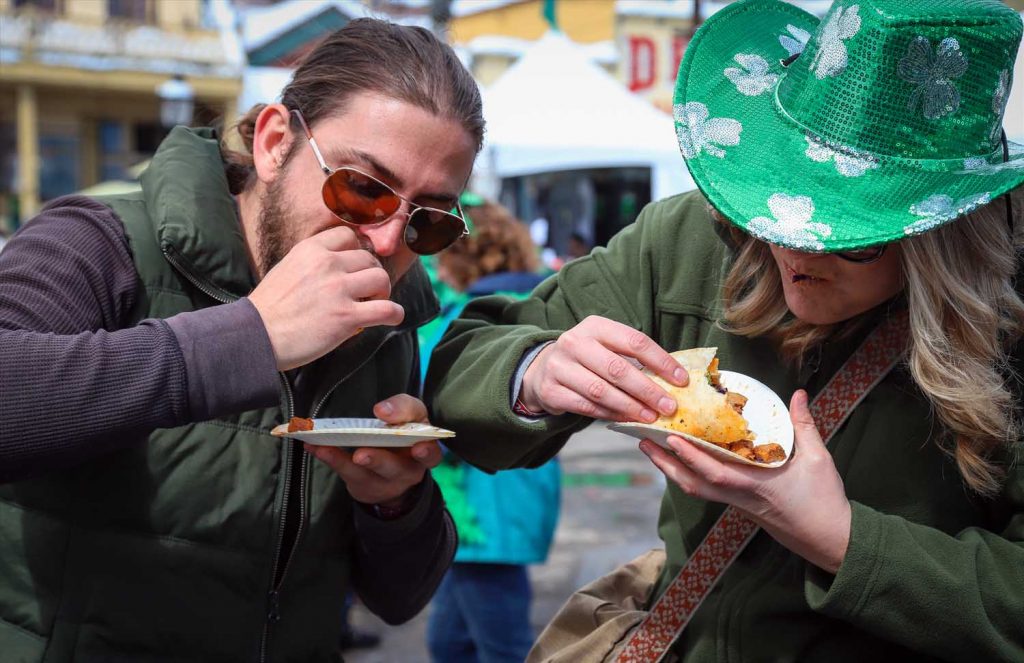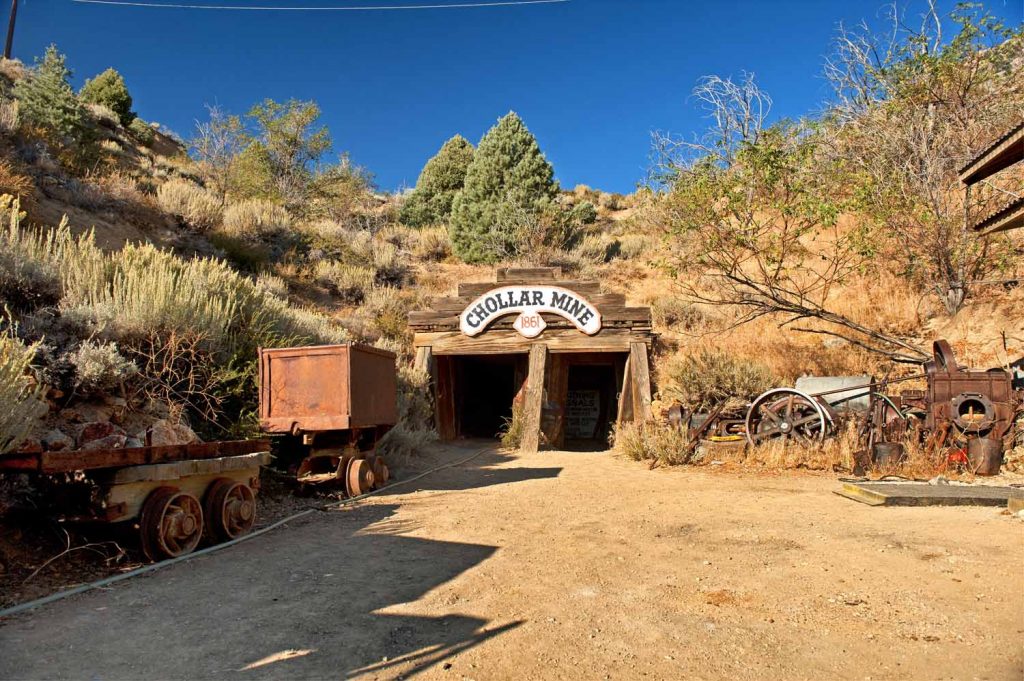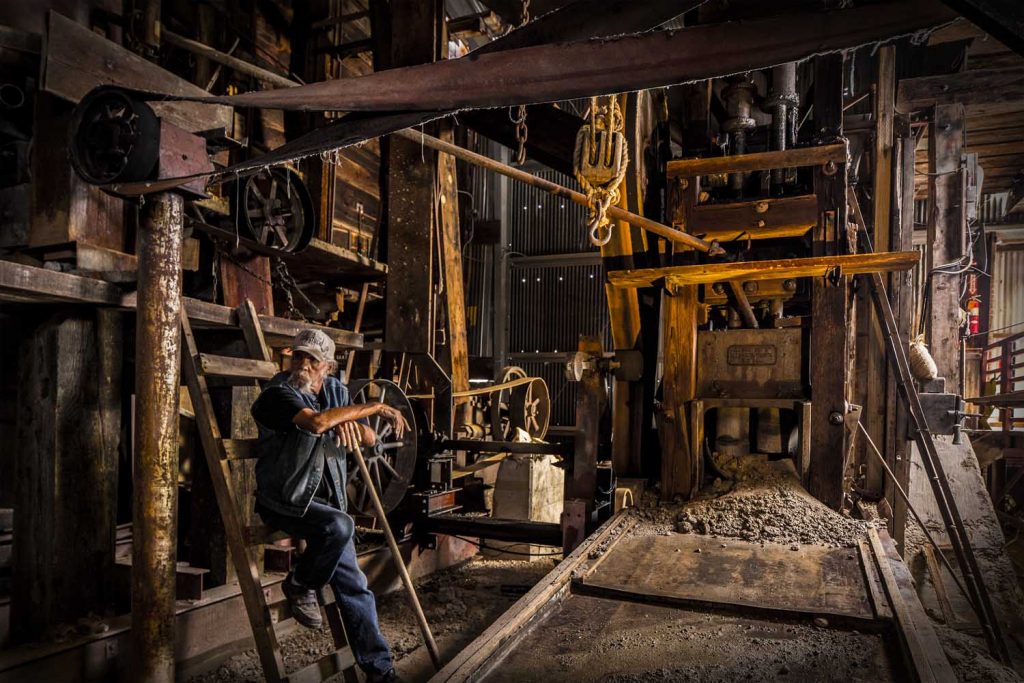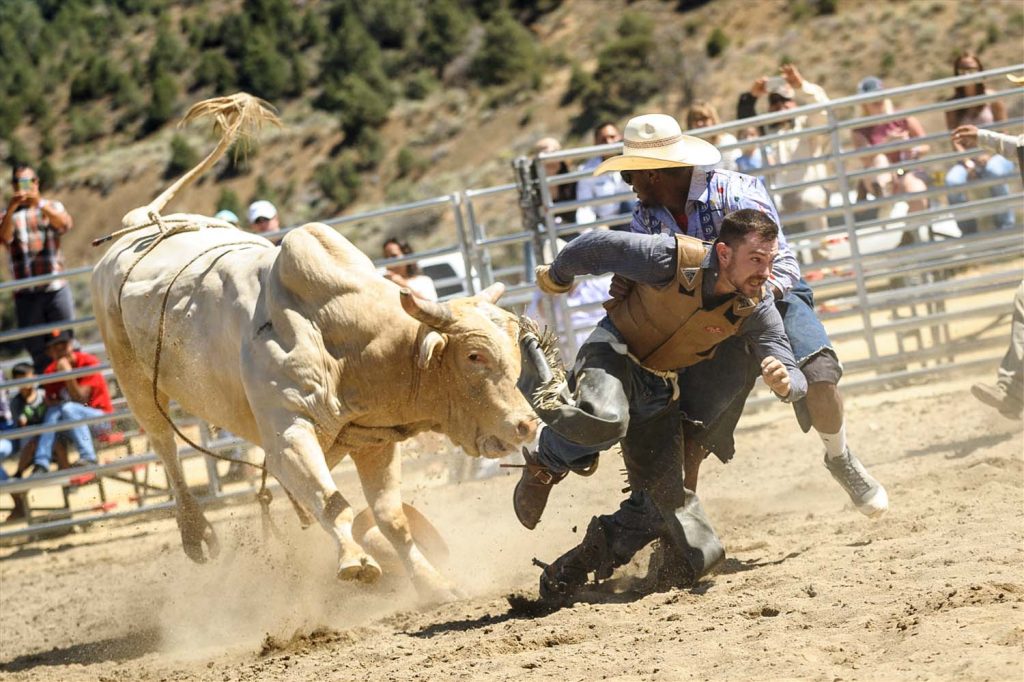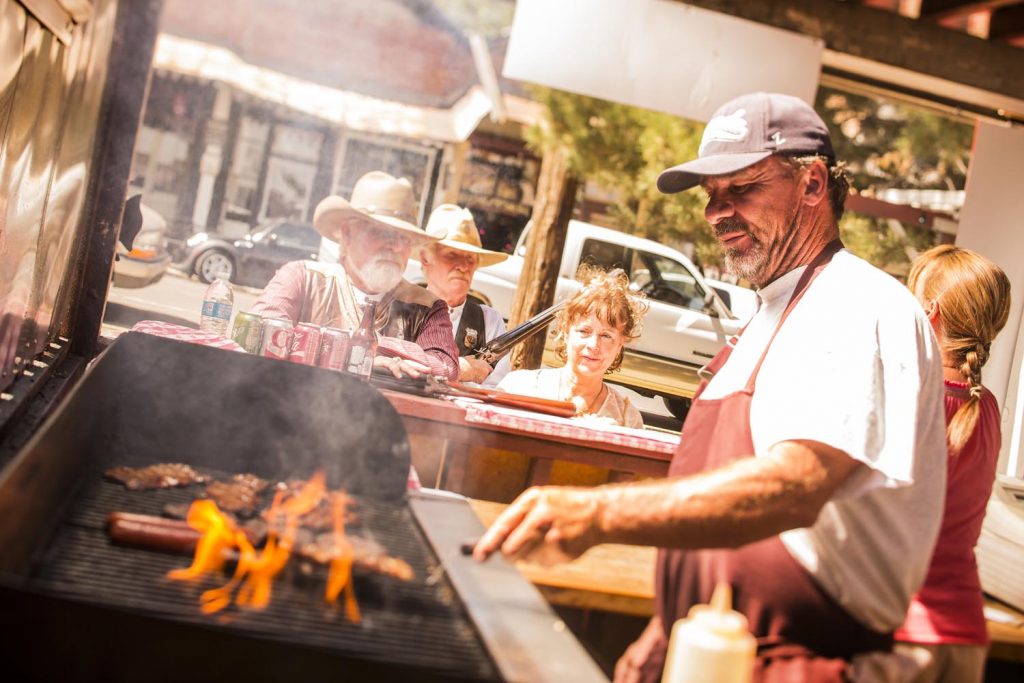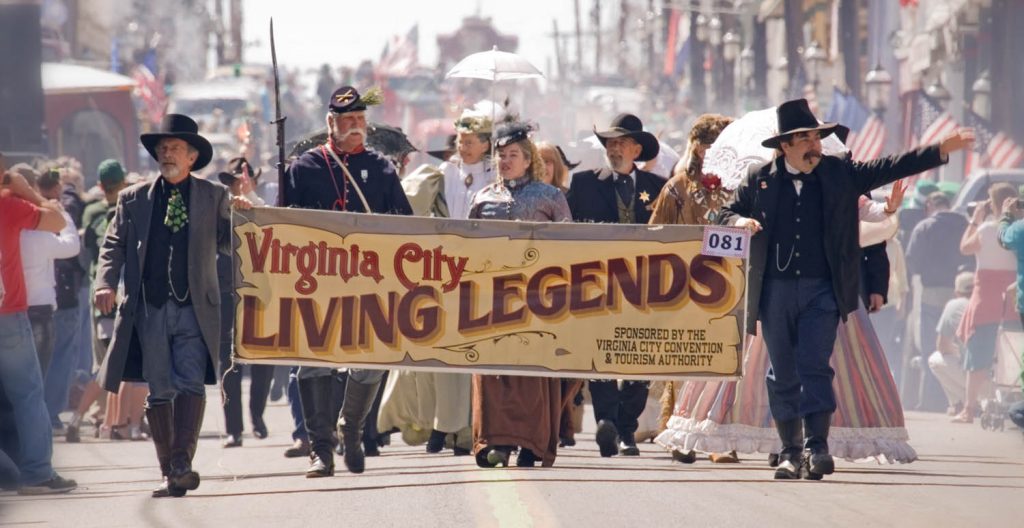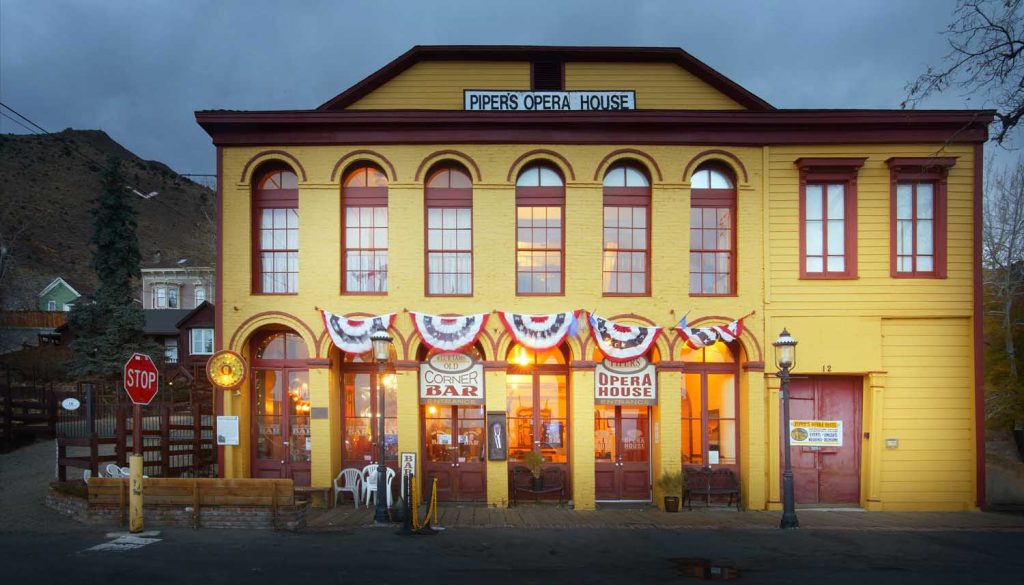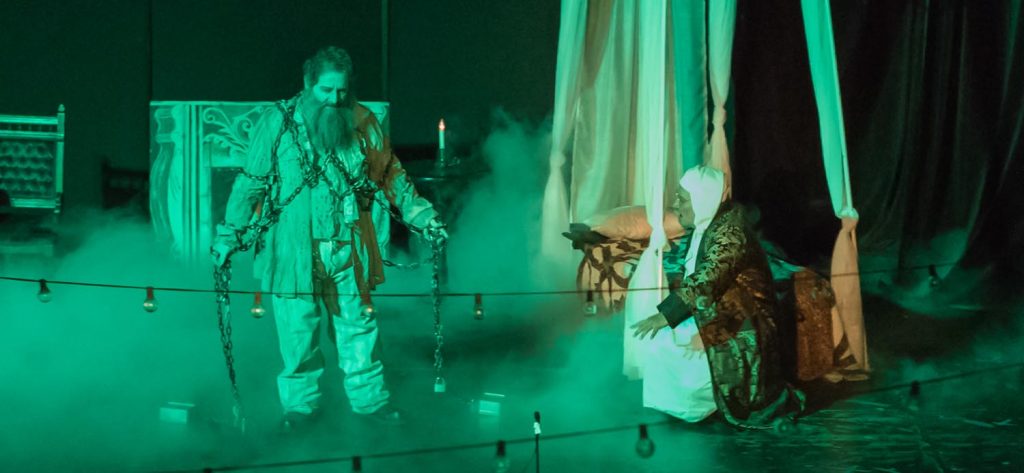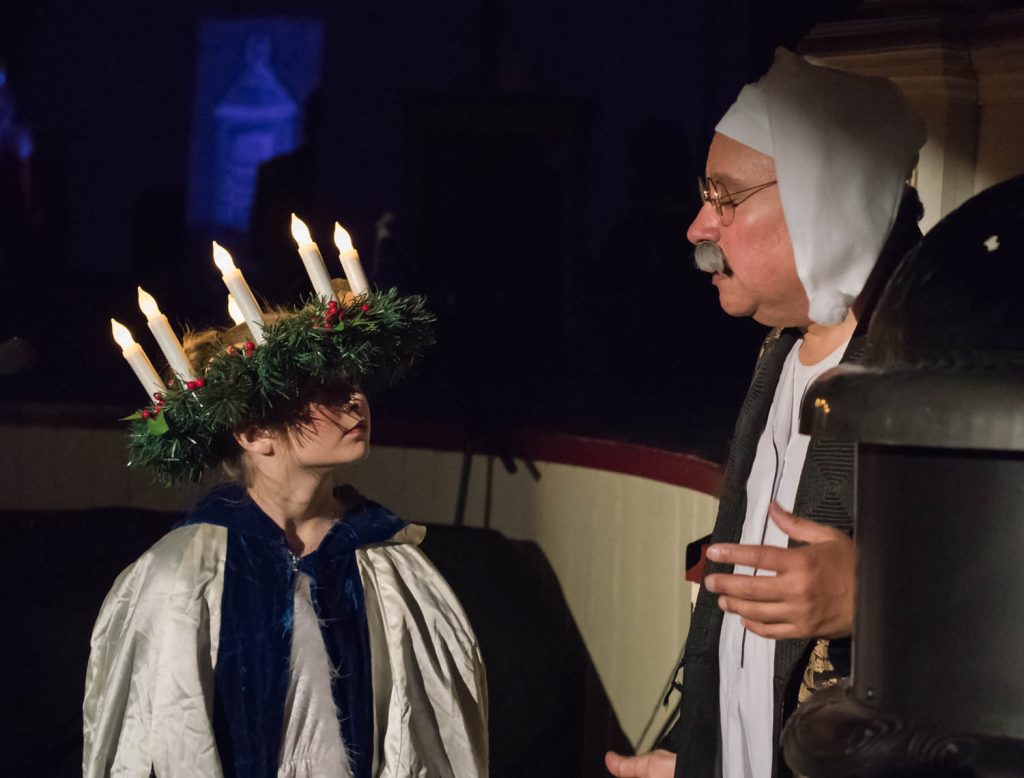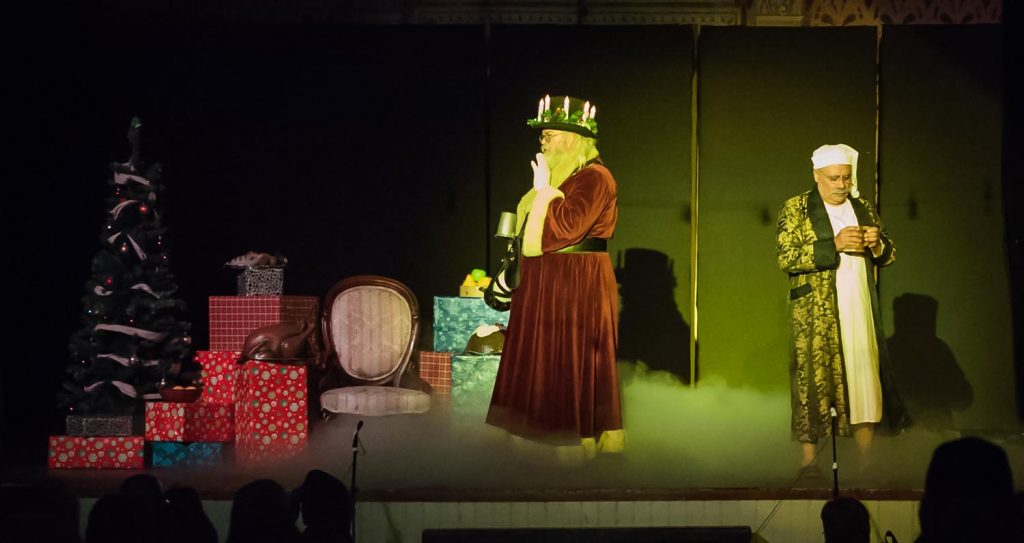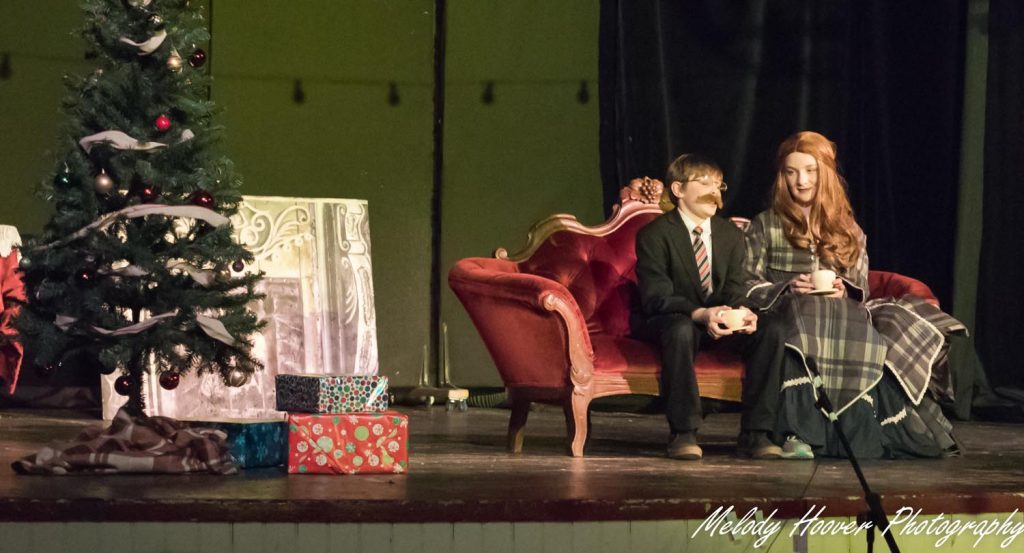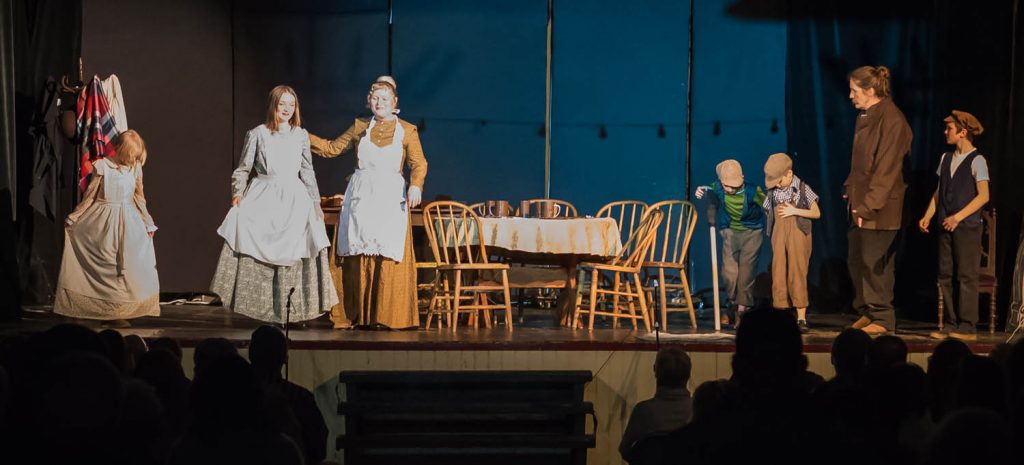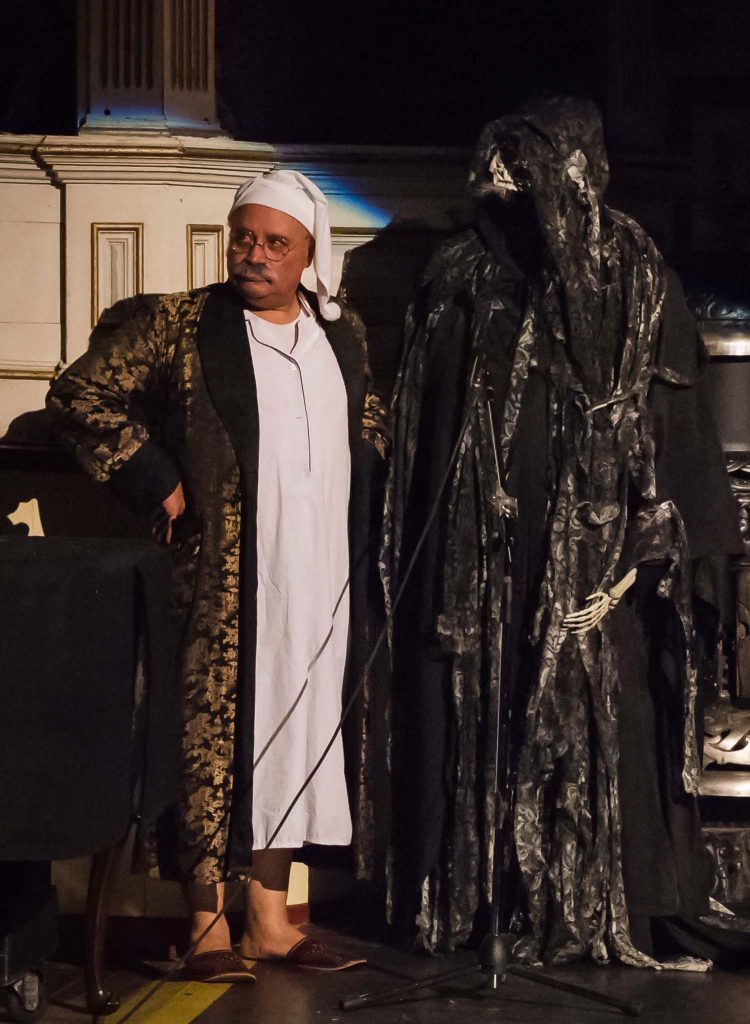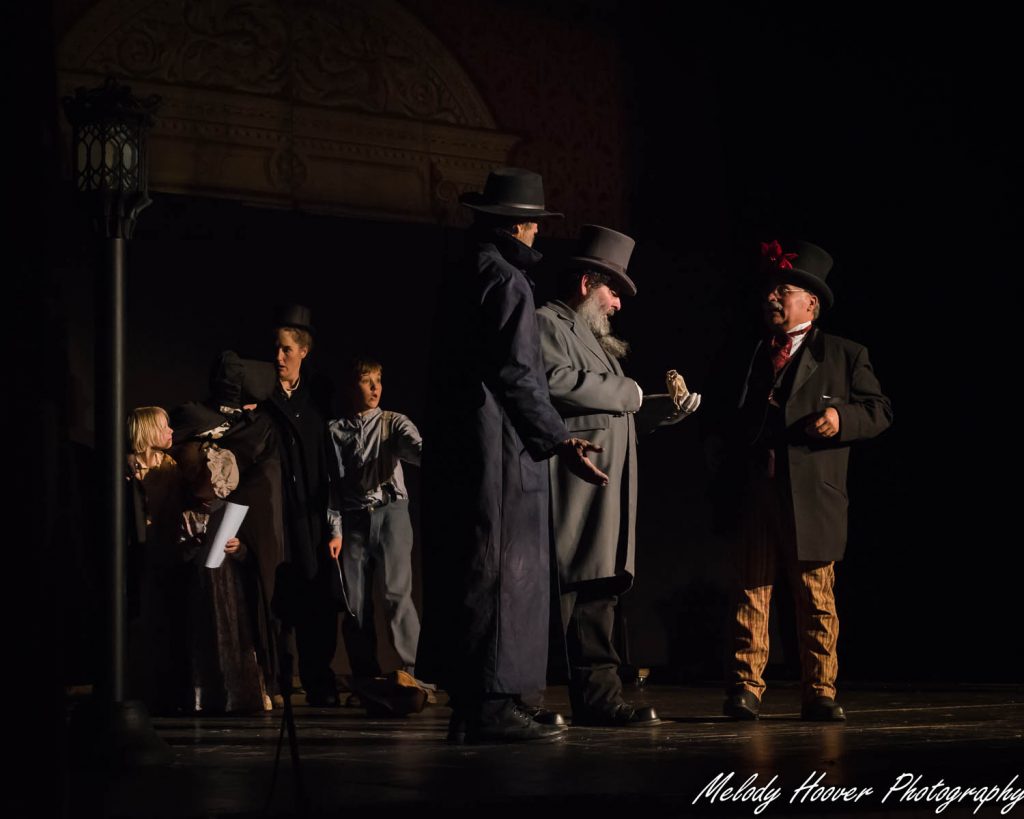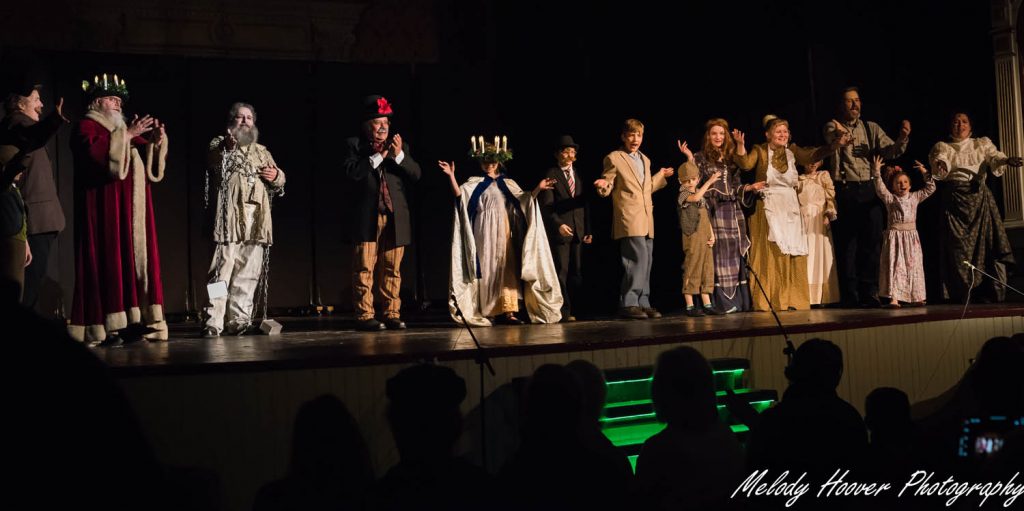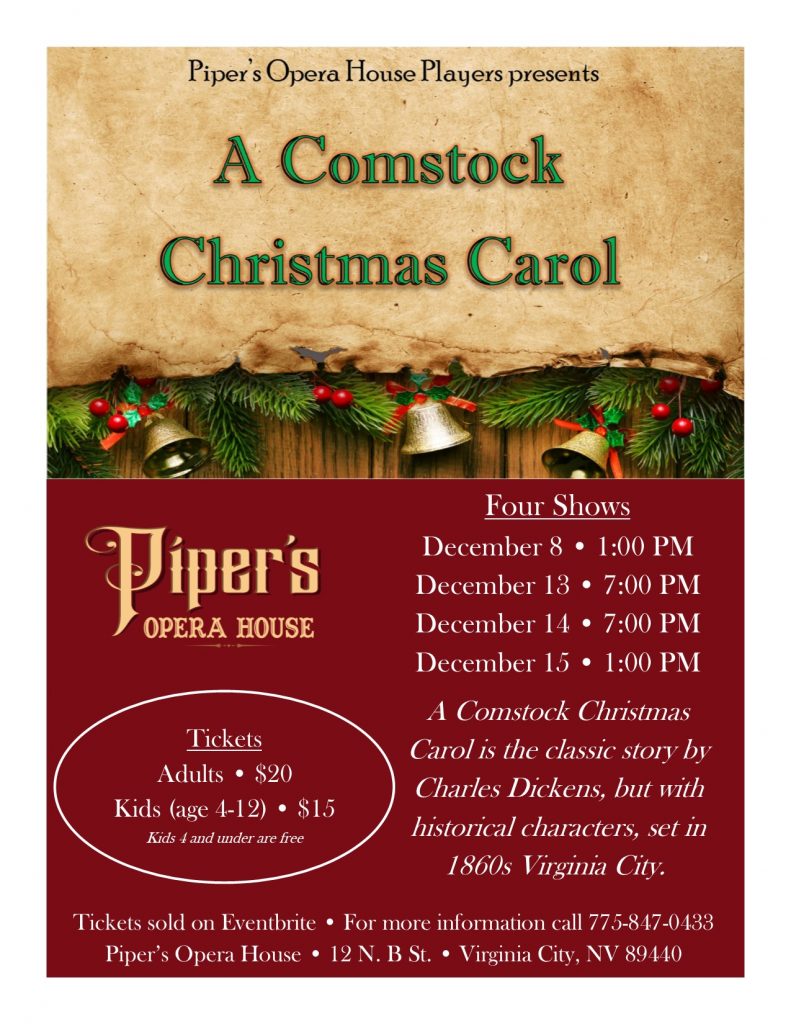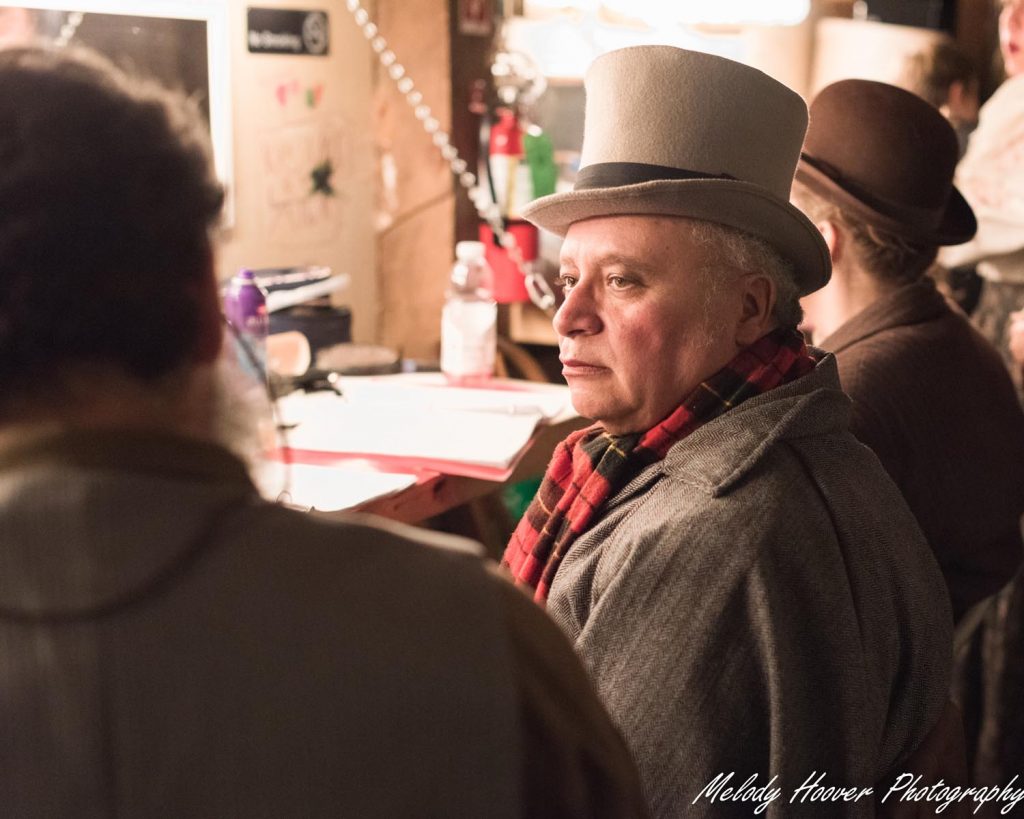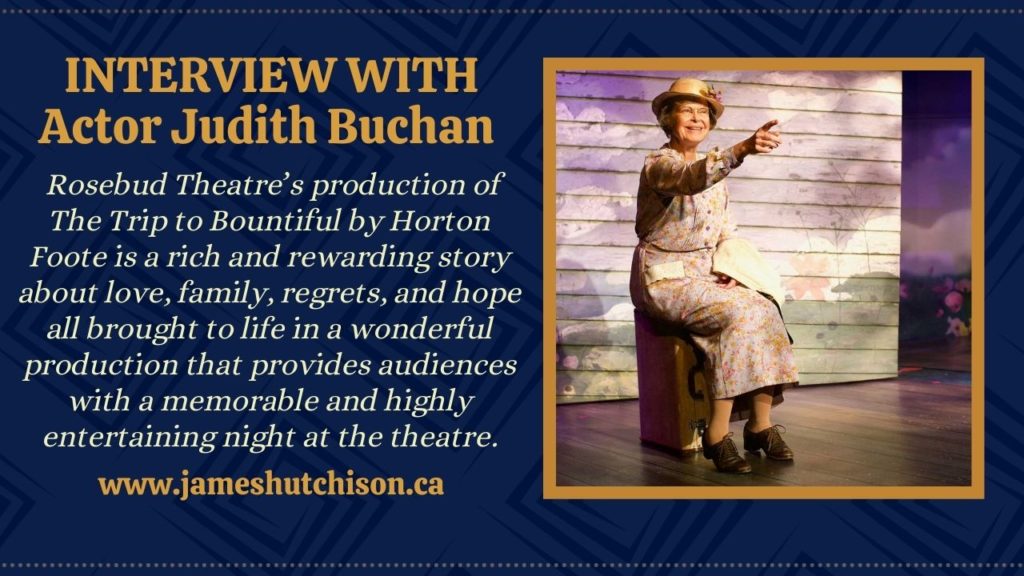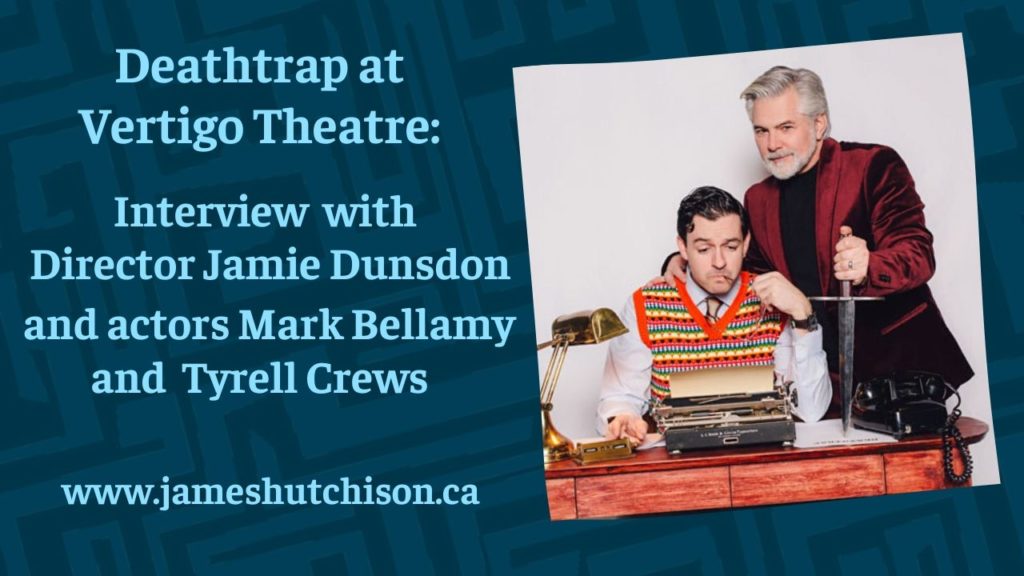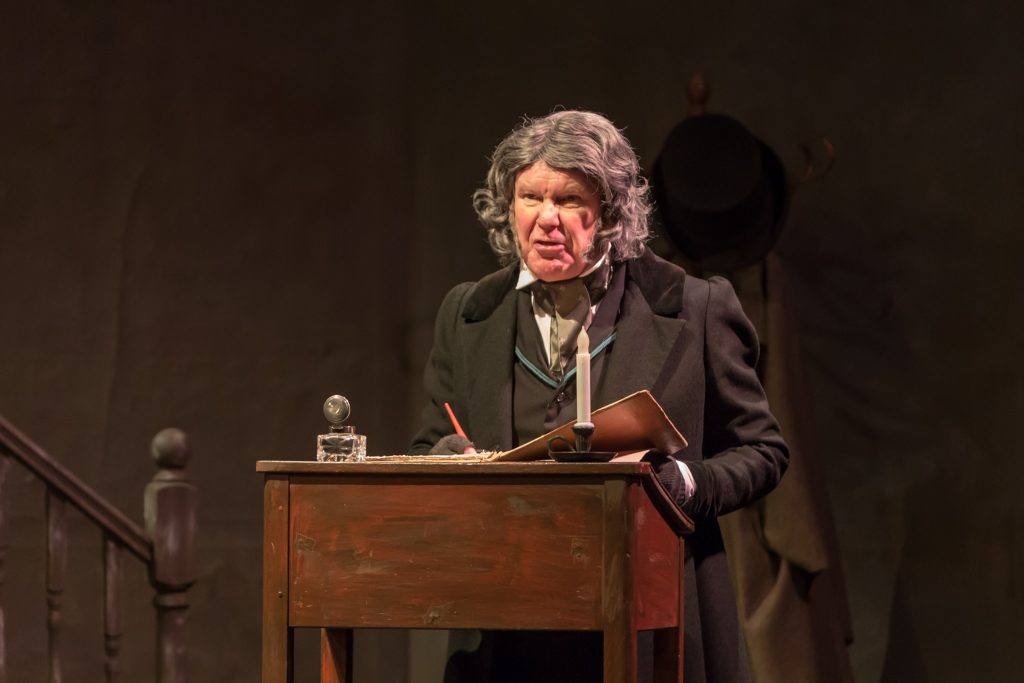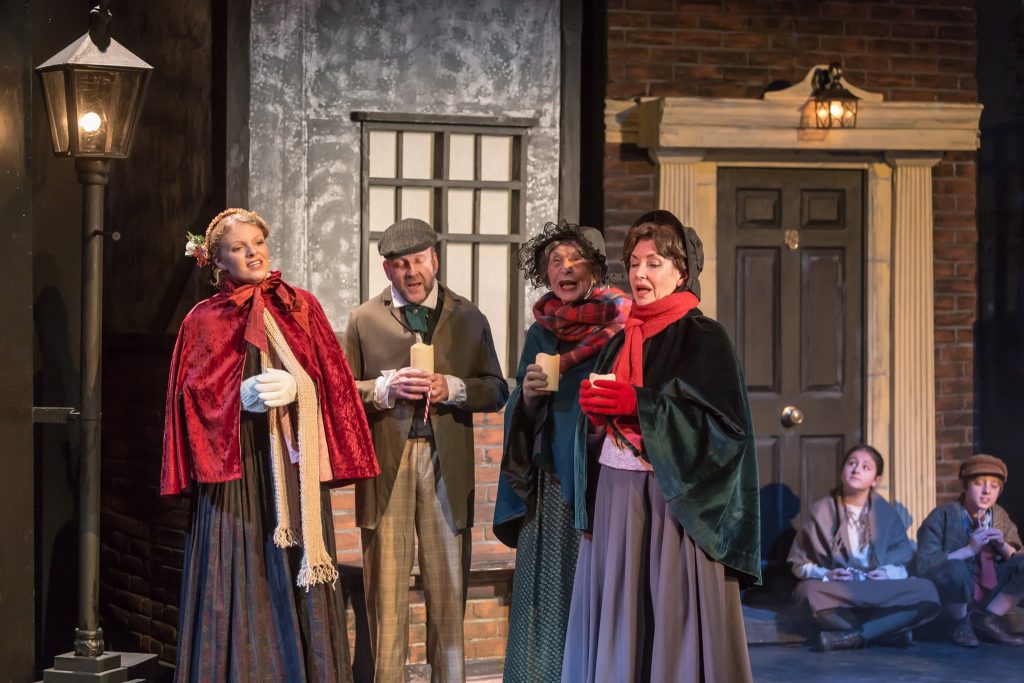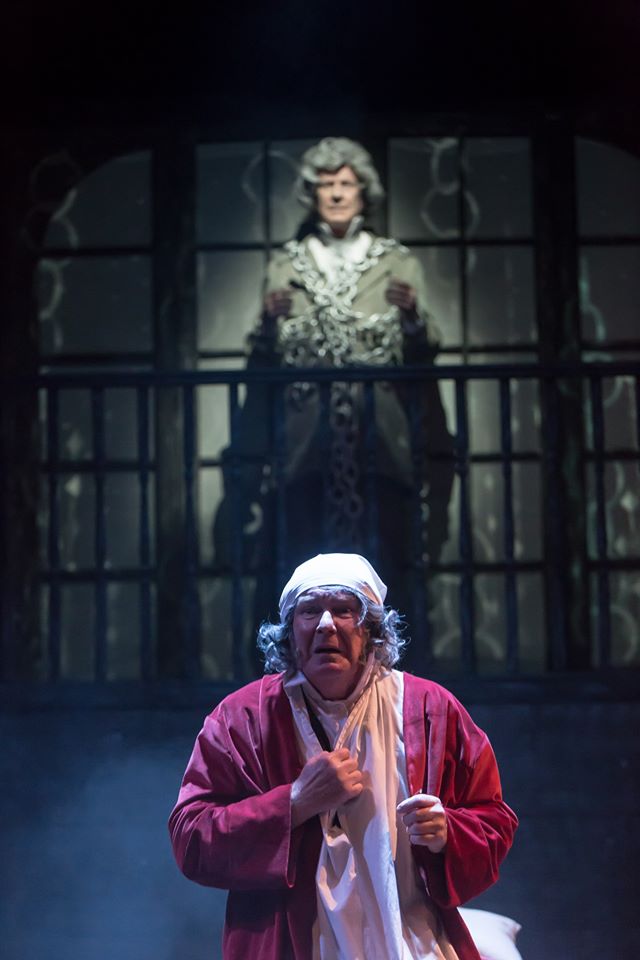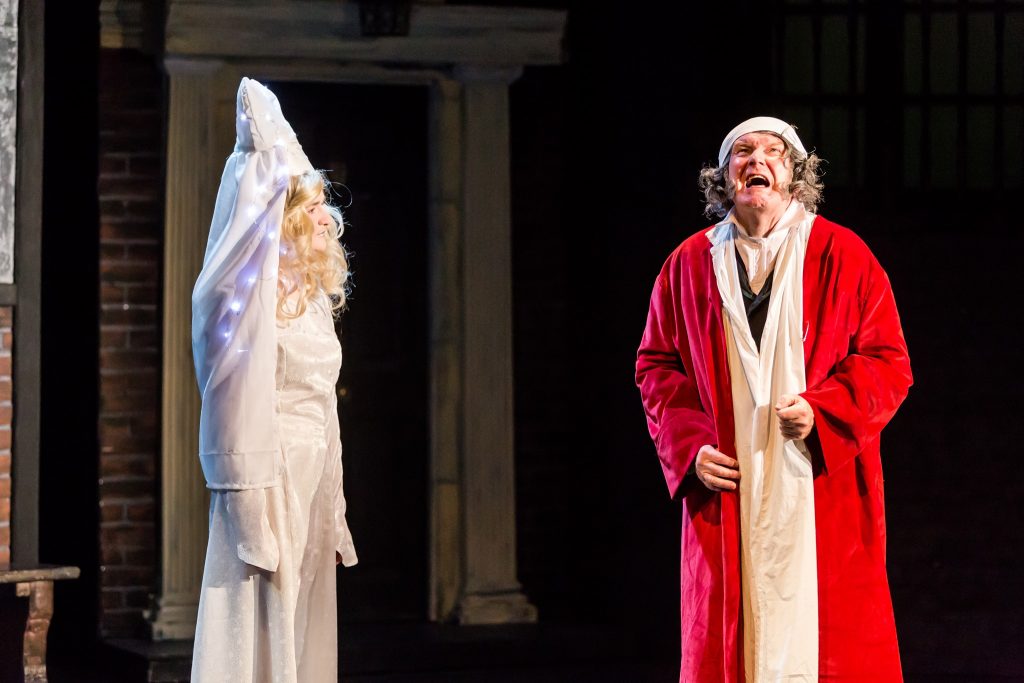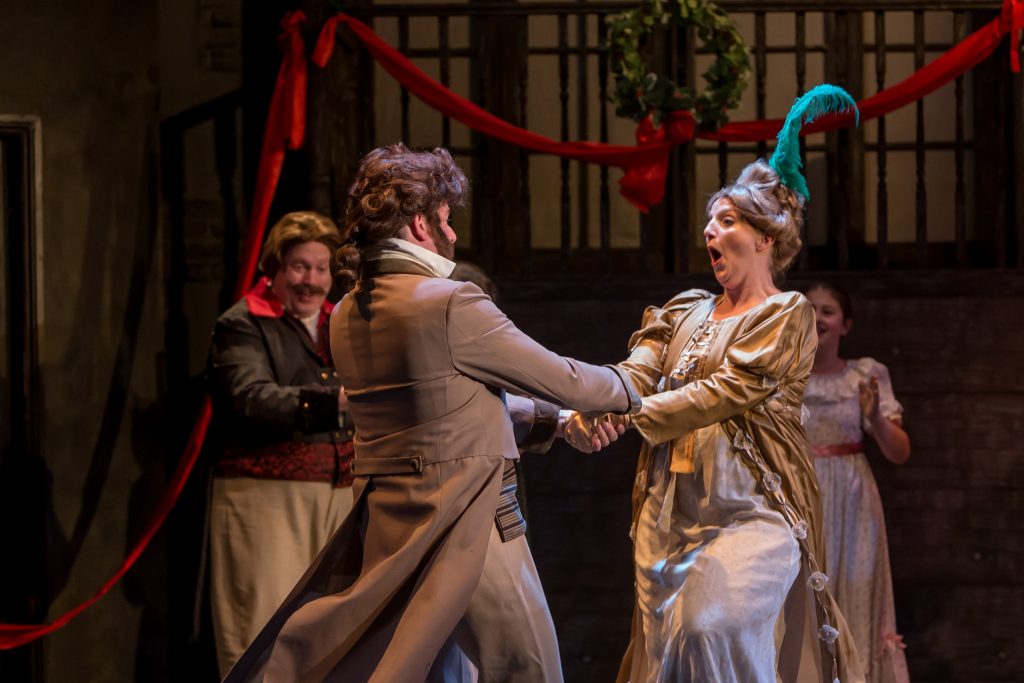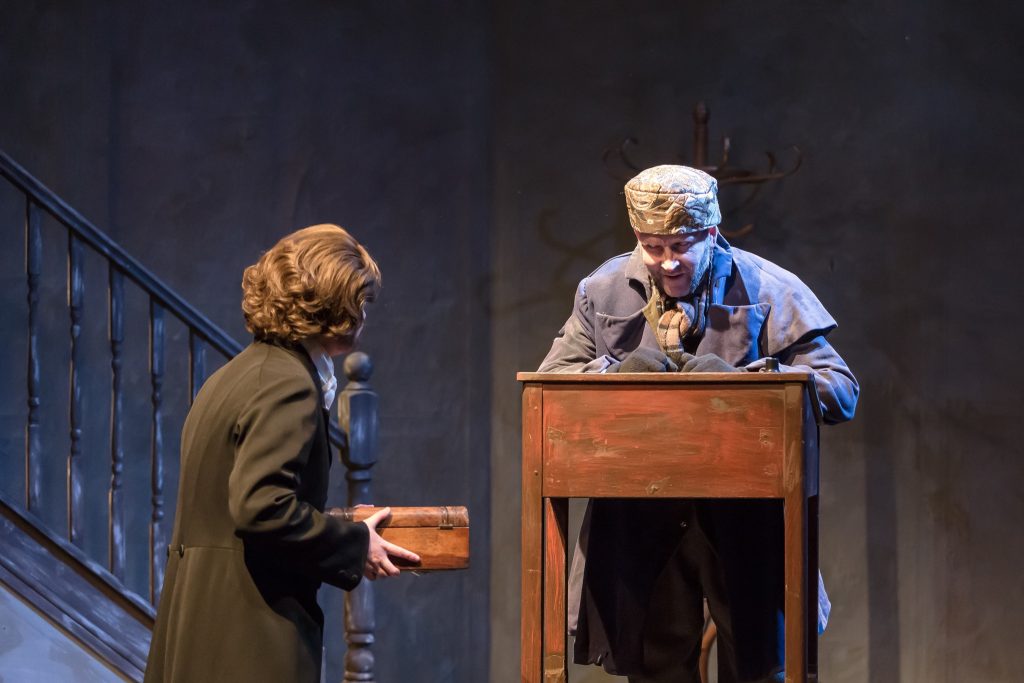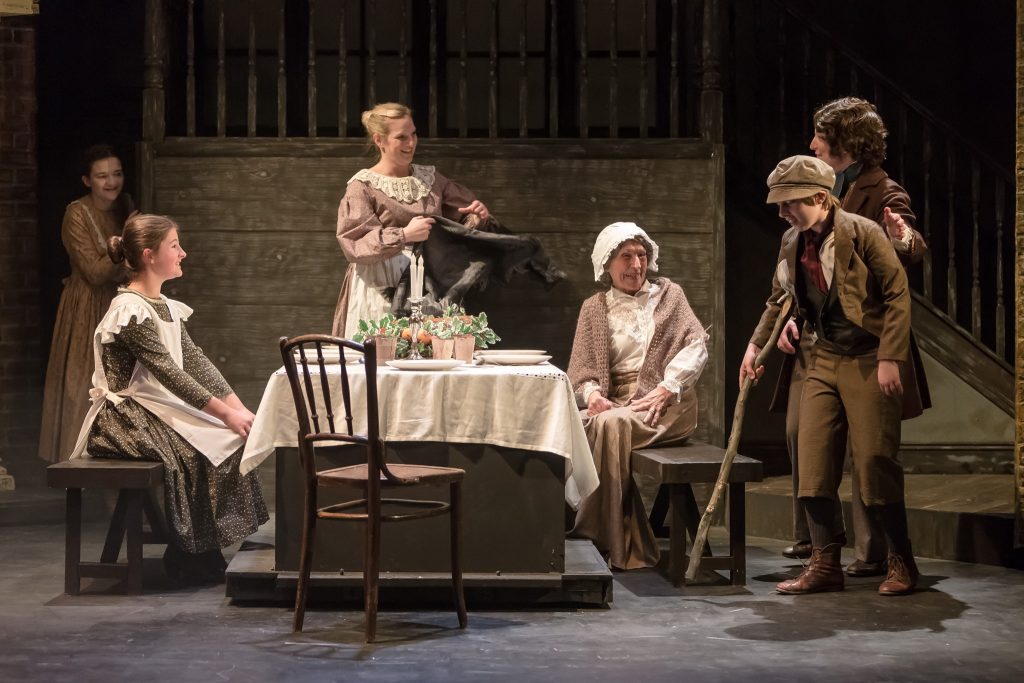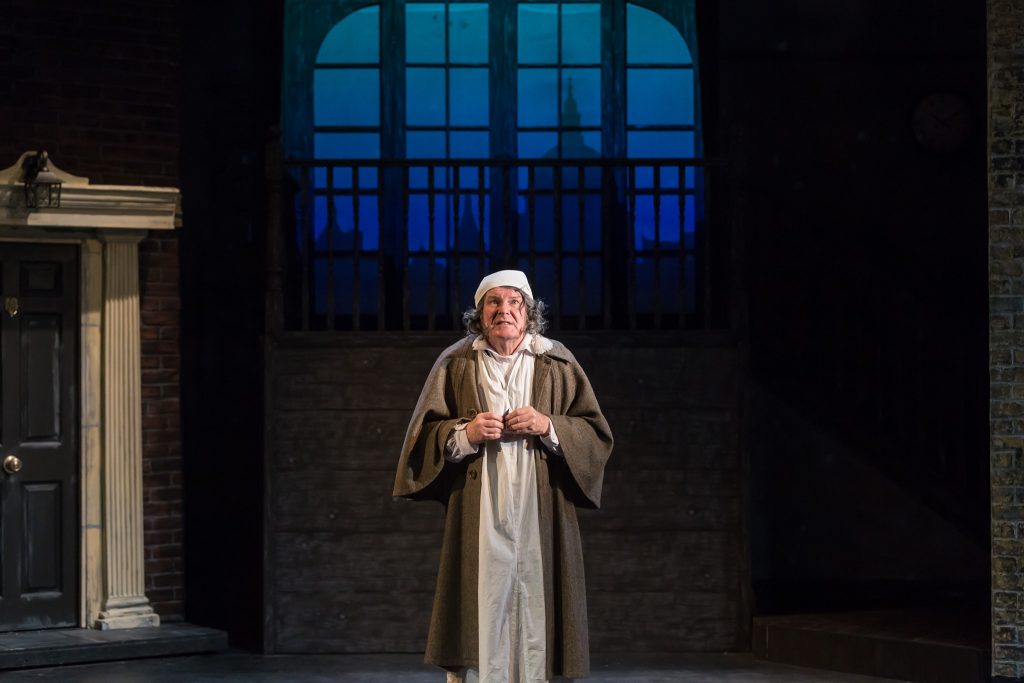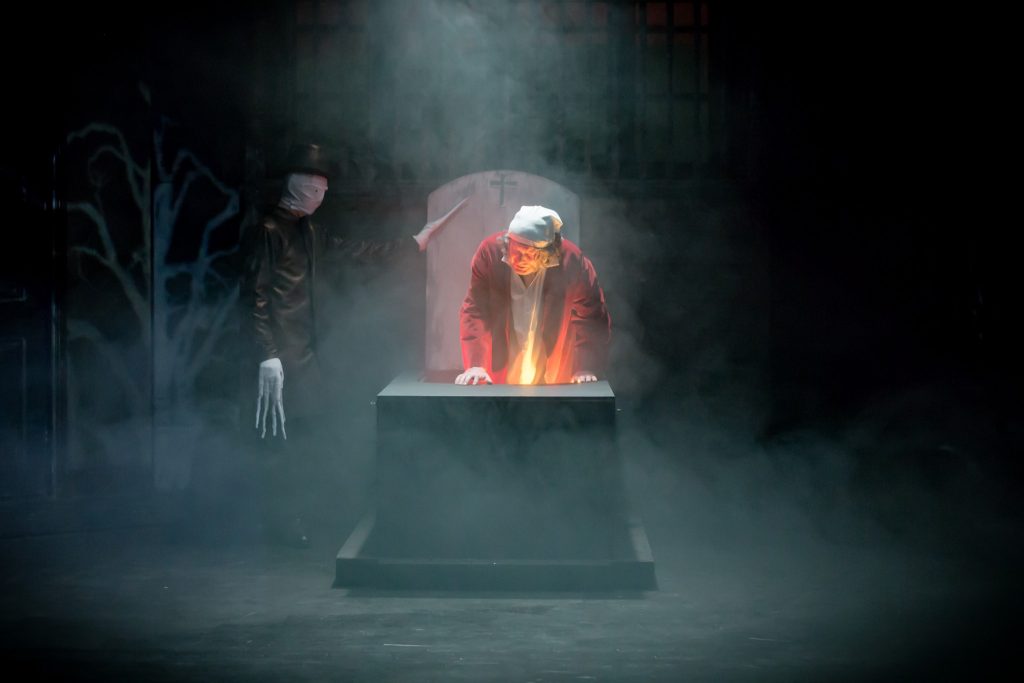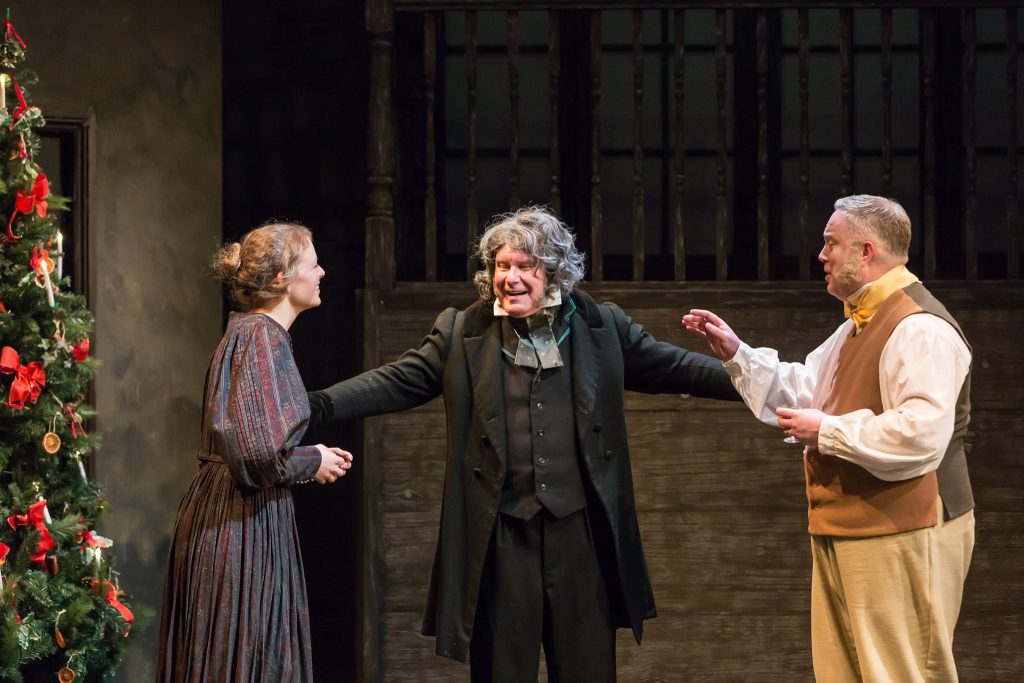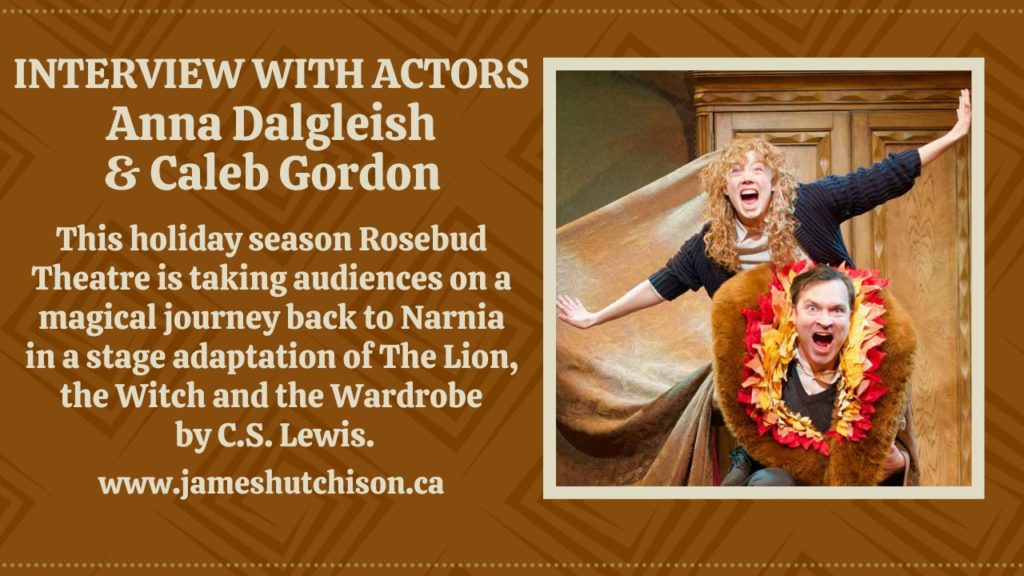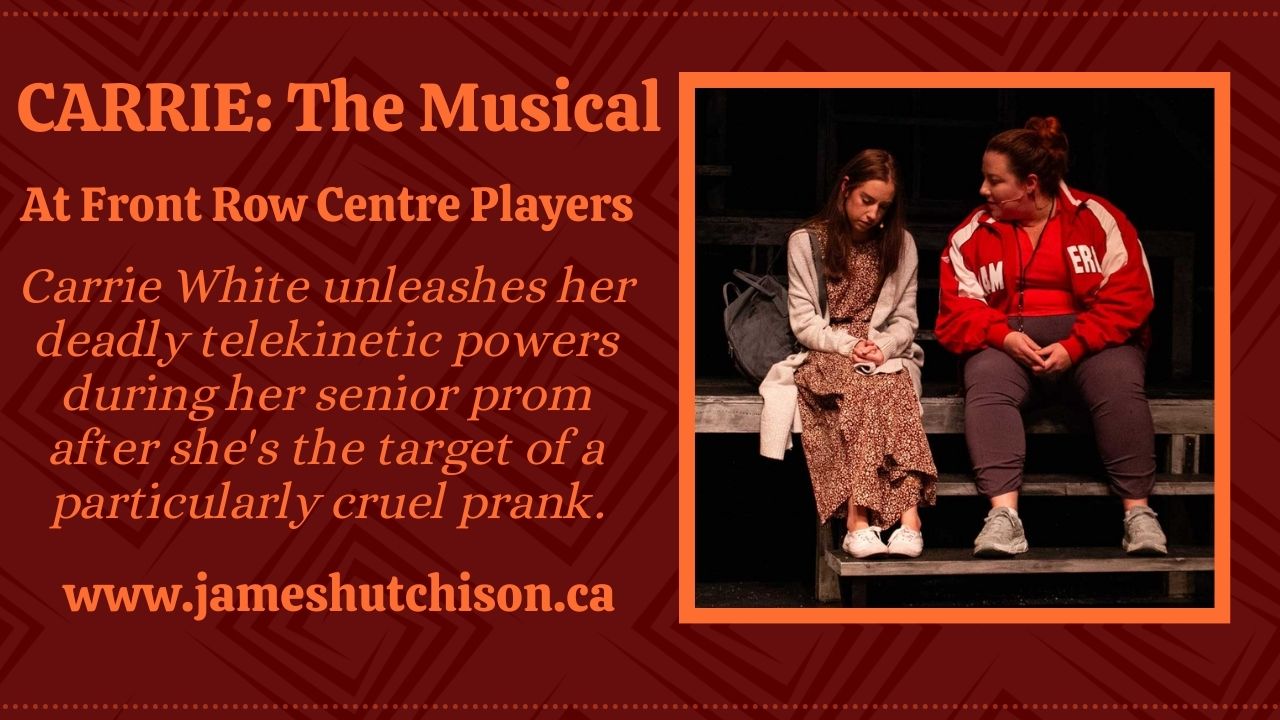
Last year I started my theatre season by seeing a production of Misery at Vertigo Theatre starring Anna Cummer as Annie Wilkes and Haysam Kadri as Paul Sheldon. The production was directed by Jamie Dunsdon and it was so good I saw it twice. And this year I had a chance to start my theatre season with another Stephen King story by sitting in on the dress rehearsal for the Front Row Centre Players production of Carrie: The Musical.

Stephen King’s writing career or as I like to call it – his Decades-Long Reign of Terror – could conceivably be traced back to the publication of his first novel Carrie in 1974. That novel changed King’s life. In fact, he threw his first few pages of Carrie into the garbage and wasn’t going to spend any more time working on the story until – his wife Tabatha fished it out of the garbage and read it and said it was good and he should finish it.
So, he did. And when the publisher sold the paperback rights for $400,000 half of which went to King, he was able to quit his teaching job and begin writing full time. And I suppose there is an alternate universe where he threw away the story and his wife tossed it out with the garbage and Stephen King remained a teacher of high school students and retired after 40 years of public service and at the age of sixty-five moved to Florida where he enjoys lawn bowling and dining out at the all you can eat Crazy Buffet. Now there’s a horror story. If you want to hear King tell the story of how Carrie came to be check out the link at the bottom of this post where he tells the story in his own words.
Carrie started as a novel in 1974 and became a successful movie in 1976 that starred Sissy Spacek, Amy Irving, Piper Laurie, and Nancy Allen. In 1988 Carrie was slated for a Broadway run as a musical. And why not? There are plenty of successful horror musicals such as The Rocky Horror Picture Show, Evil Dead The Musical, and Little Shop of Horrors. Carrie with its supernatural elements and high school drama seems like the perfect story to adapt into a musical. Unfortunately, the original Broadway Production shut down after only 16 previews and five performances and a loss of seven million dollars, but it was far from dead.
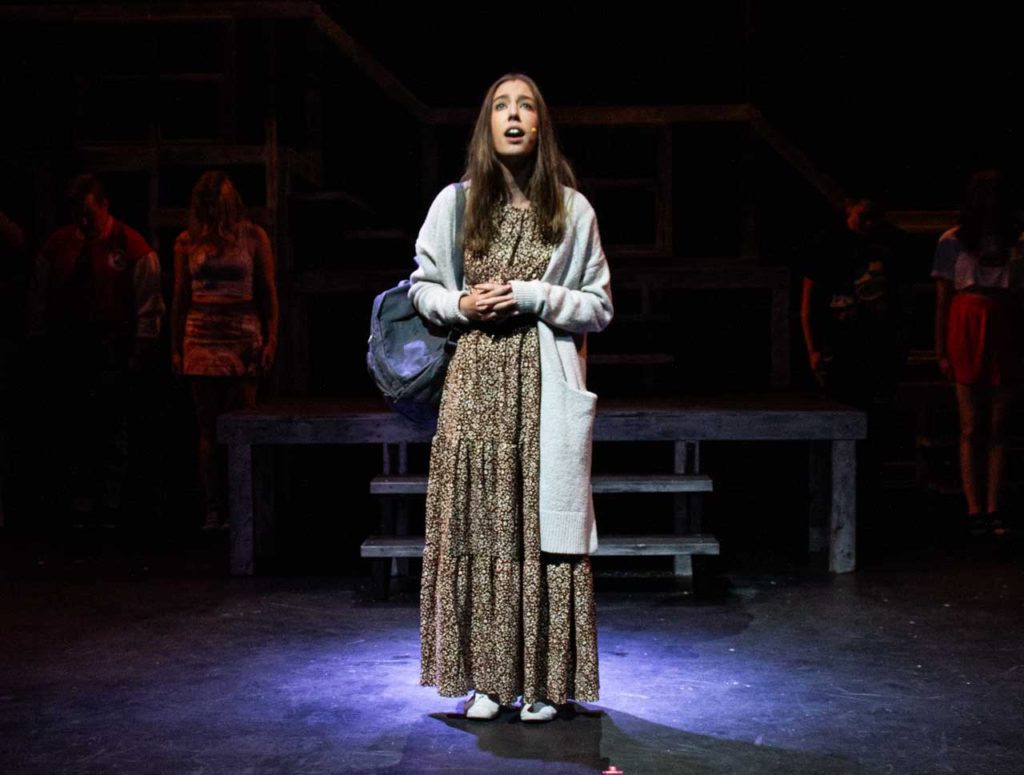
There was an Off-Broadway revival in 2012 where the score and book were revised by the original composers Michael Gore and Dean Pitchford, and writer Lawrence D. Cohen and several of the original songs were replaced with new compositions. Our own Calgary connection to the story is that the current artistic director of Theatre Calgary Stafford Armia was involved in the readings and workshops that lead to the 2012 revival. This led to an Off-West End production in 2015 that opened to mostly positive reviews.* And when I checked Concord Theatricals which controls the performance rights for the show they had over 50 scheduled productions listed. So, I’d say Carrie has finally found its audience.
And that’s partly because one of the things that makes King such a successful writer is that he writes sympathetic and relatable characters that find themselves in unusual or supernatural circumstances. Life is often cruel and unfair in his stories and that’s one of the reasons we find them so compelling. – who doesn’t like to cheer for the underdog? In The Shining Jack Torrence isn’t simply a mallet-wielding psychopath. No, he’s a man trying to stay sober and be a good father while fighting the supernatural forces that are leading him toward a murderous path. And in The Shawshank Redemption who doesn’t cheer for the innocent Andy Dufresne wrongly convicted for the murder of his wife and sent to prison where his efforts to prove his innocence are thwarted by a corrupt warden and prison system? And who doesn’t travel back to their own long summer days of childhood while watching Stand by Me because it’s a story about friendship, doing the right thing, and being a kid on summer vacation.
In Carrie, the plot follows Carrie White a shy girl who lives on the edge of the high school community and when not fading into the background at school she spends her time at home with her fanatical Christian mother Margaret White who practices a particularly toxic religious faith. Margaret has kept Carrie in the dark about the facts of life and so when her daughter experiences her first period in the girl’s locker room shower, Carrie reacts with horror and panic. Rather than helping Carrie the rest of the class, being typical high school kids, make her an object of ridicule as they taunt and bully her. It isn’t until the gym teacher, Miss Gardner, steps in that the girls back off and are asked to apologize. When Chris Hargensen refuses to apologize and instead tells Carrie to “eat sh*t” Rita bans Chris from attending the prom.
Sue Snell one of the popular girls who participated in the taunting feels particularly guilty about her treatment of Carrie and convinces her boyfriend Tommy Ross to take Carrie to the prom instead of her. At first reluctant he finally agrees to ask Carrie to the prom, and she accepts. Meanwhile outraged over missing the prom and blaming Carrie for her troubles Chris along with her boyfriend Billy Noland plot their revenge. While all this is going on Carrie discovers that she has telekinetic powers and in the days leading up to the prom she practices her abilities at home by moving and levitating objects. Needless to say, while the prom goes well initially for Carrie this is Stephen King and you know things aren’t going to end well.
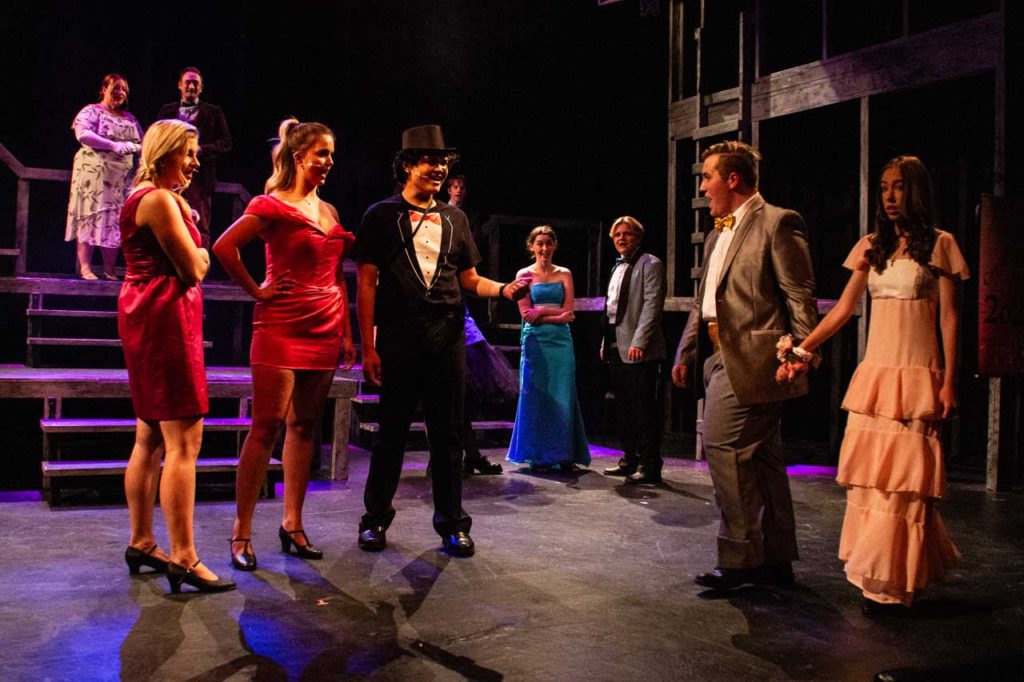
Director Kristine Astop has assembled a talented group of young actors with the lead role being split between Deidra Michel and Alexa Jobs who play Carrie on alternating performances. On the night I saw the show Deidra Michel was playing Carrie and gave a heartfelt performance as Carrie navigates her dismal existence between her life as an outcast at school and her abusive life at home with her mother. Lyndsey Paterson as Carrie’s salvation-obsessed mother can be loving but also savage and terrifying in her zeal to wage war against the world and rid it of sin. Kianna King does a terrific job of playing the guilt-ridden Sue Snell who only wants to make amends for how she treated Carrie. Nolan Brown gives a sympathetic performance as Sue’s boyfriend Tommy Ross the jock with a poet’s heart. Willow Martens is perfect as the self-absorbed and popular mean girl Chris Hargenson who takes things too far, and Selwyn Halabi has the right mix of cocky smart-ass attitude to play Billy Nolan, Chris’ boyfriend, and partner in crime.
The set designed by Jamie Eastgaard-Ross features a multi-leveled platform across the back of the stage that effectively creates different acting spaces that represent the school, Carrie’s home, and the gym on prom night. There’s also live music which is always a bonus when it comes to musicals. A live band can respond to the subtle differences that happen during a performance from night to night and add to the energy of the production.
As far as the actual music goes it sets the scene and moves the narrative along with the most powerful numbers being given to Carrie’s mother Margaret. And perhaps that’s because she’s the most extreme character. She’s the one who is going to save her daughter from damnation and will do anything in order to achieve that. But what I think Carrie: The Musical seems to be missing is a few hit songs – songs that go beyond the stage and make their way into pop culture. Songs like “The Time Warp” from The Rocky Horror Picture Show or “The Music of the Night” from The Phantom of the Opera – songs that a lot of people know even if they haven’t seen the musical.
Even so, I enjoyed the show and I think what makes Carrie work today is the fact that all the behaviour we see on stage is certainly reflected in the worst aspects of social media and how we treat each other online. In fact, you could simply argue that social media is just a tool for behaviours that have already been a part of our tribal repertoire for generations. And that undercurrent of hate and anger and mob behaviour creates a sinister feeling to the events that unfold on stage and that’s the perfect subject matter for a musical, don’t you think?
FURTHER READING
How Carrie changed Stephen King’s life and began a generation of horror: Writers and readers recall the shock of reading the debut novel about a high-school outcast who discovers paranormal powers and reflects on its huge influence. by Alison Flood. The Guardian. April 4, 2014
* Carrie: The Musical: Originally premiering in the U.K. in 1988, Carrie opened on Broadway at the Virginia Theatre the same year, but closed after 16 previews and five regular performances.
Talking Volumes: Stephen King on “Carrie” Author Stephen King talks about his first published novel, “Carrie,” during the Talking Volumes series at the Fitzgerald Theater in St. Paul, Minnesota. Kerri Miller hosted the live event on November 18, 2009. He tells the story about how his wife Tabatha fished Carrie out of the trash after King had thrown the first few pages away and decided not to finish it.
